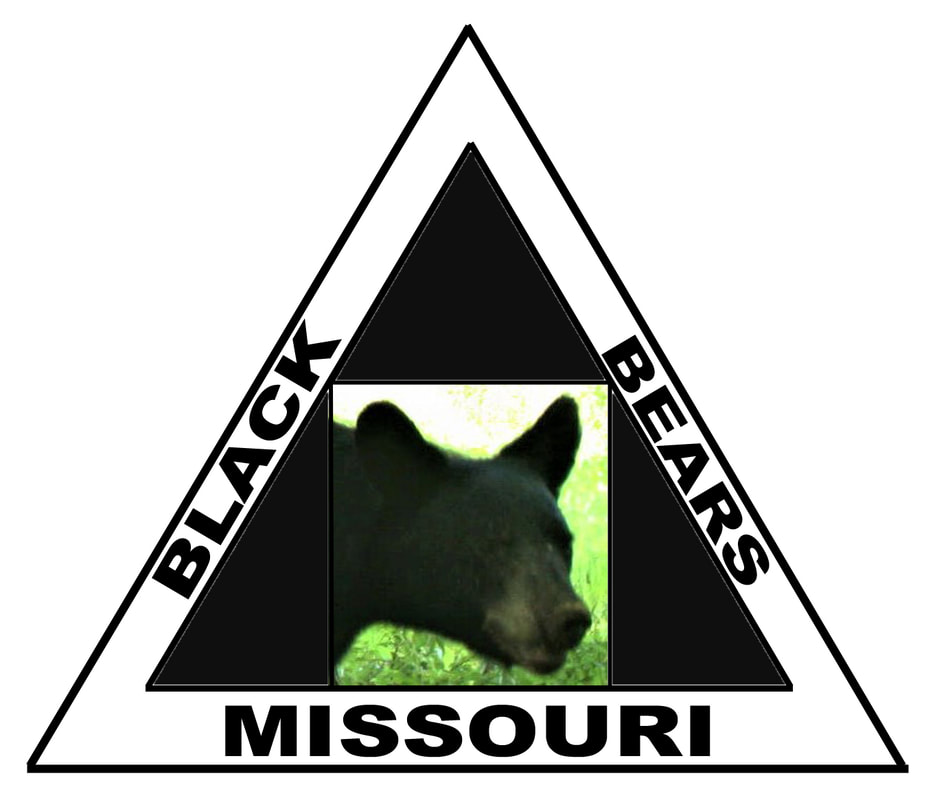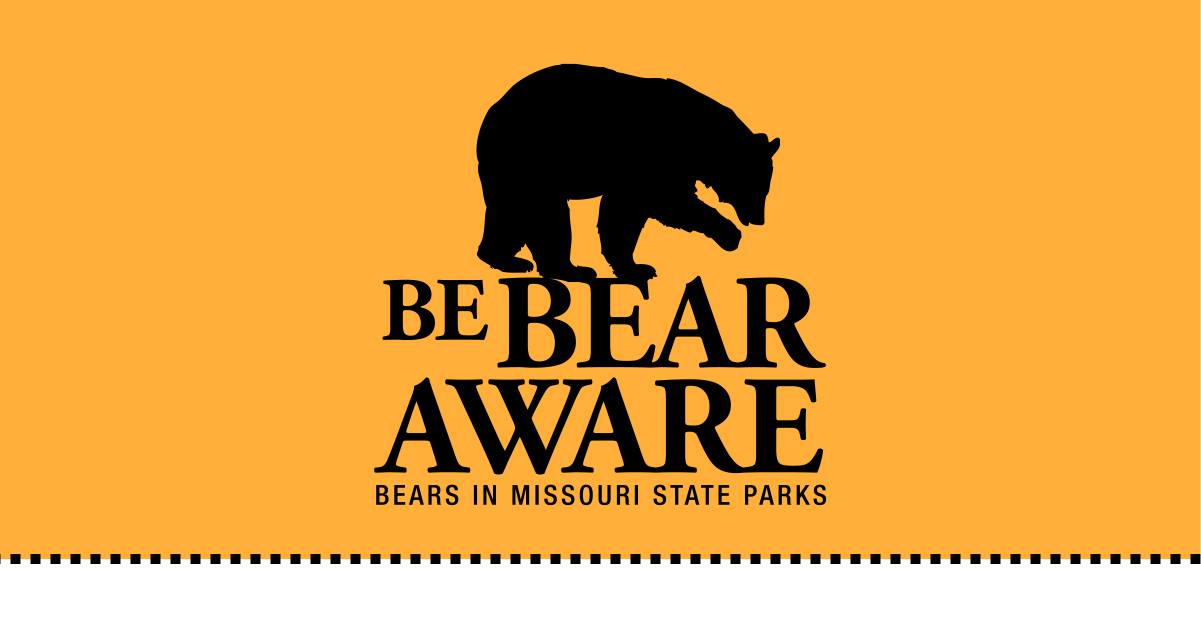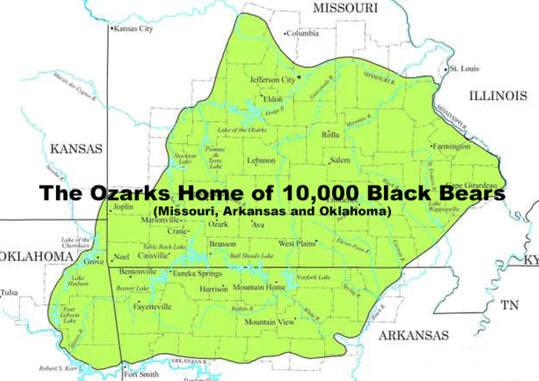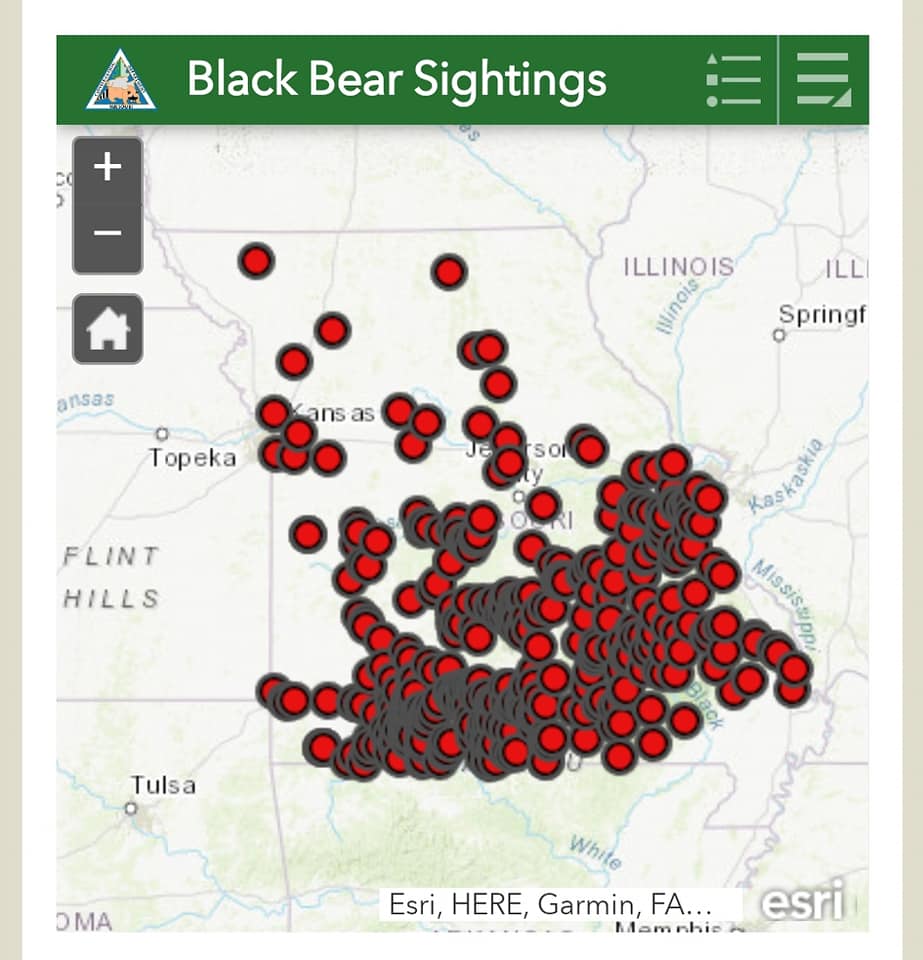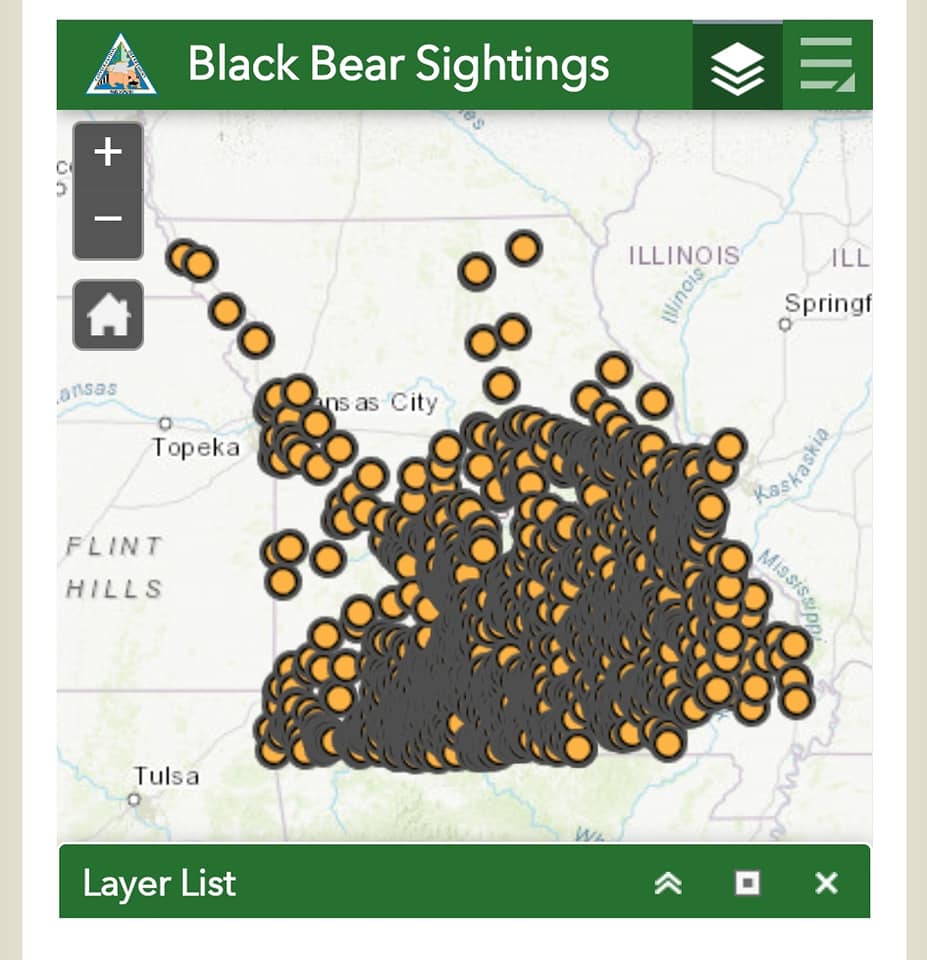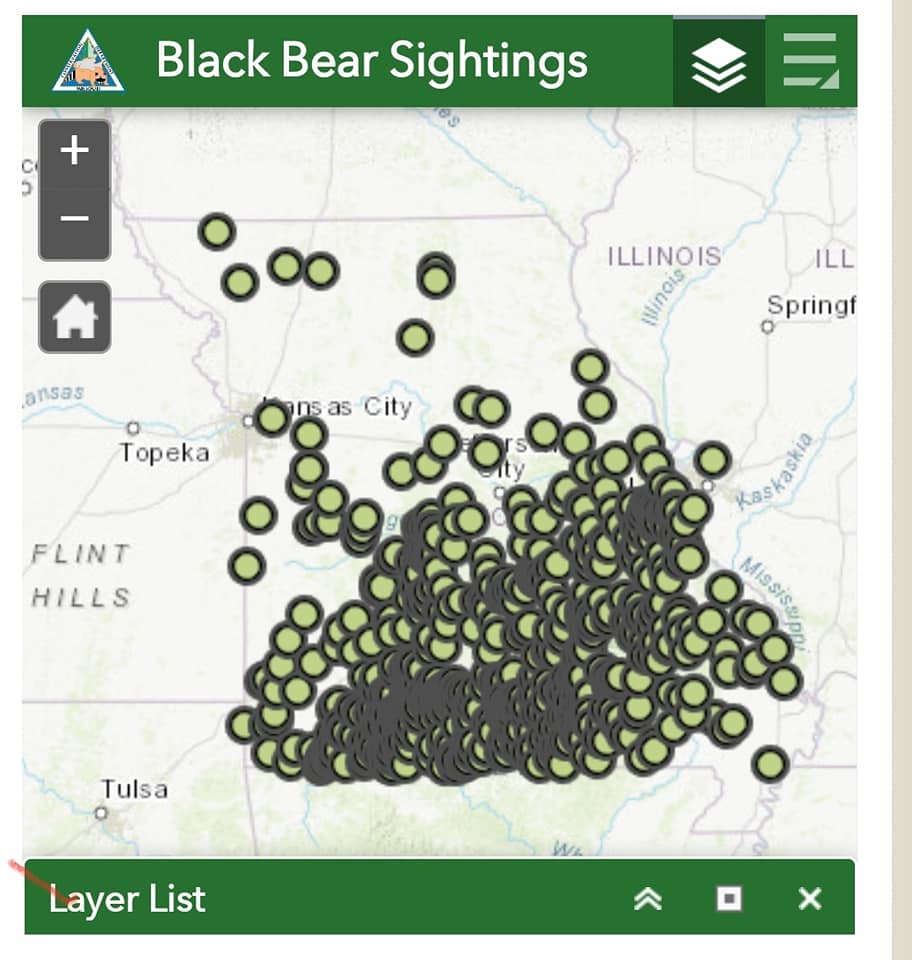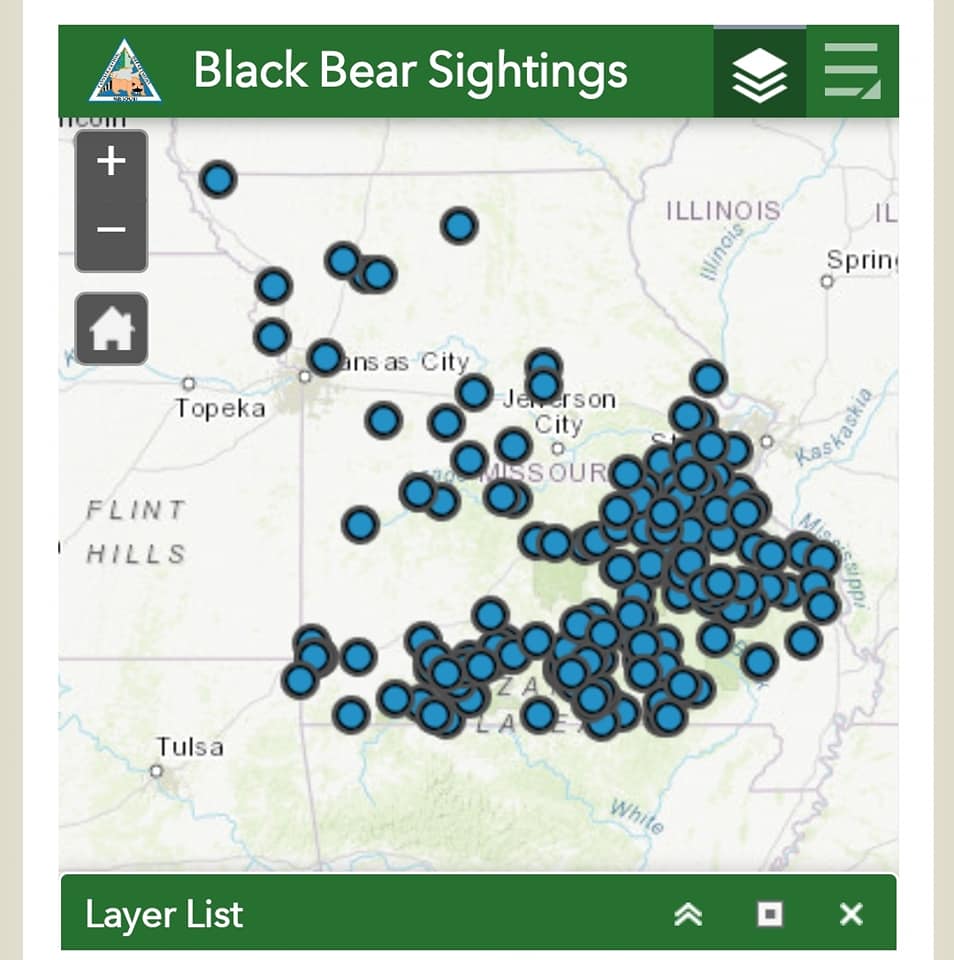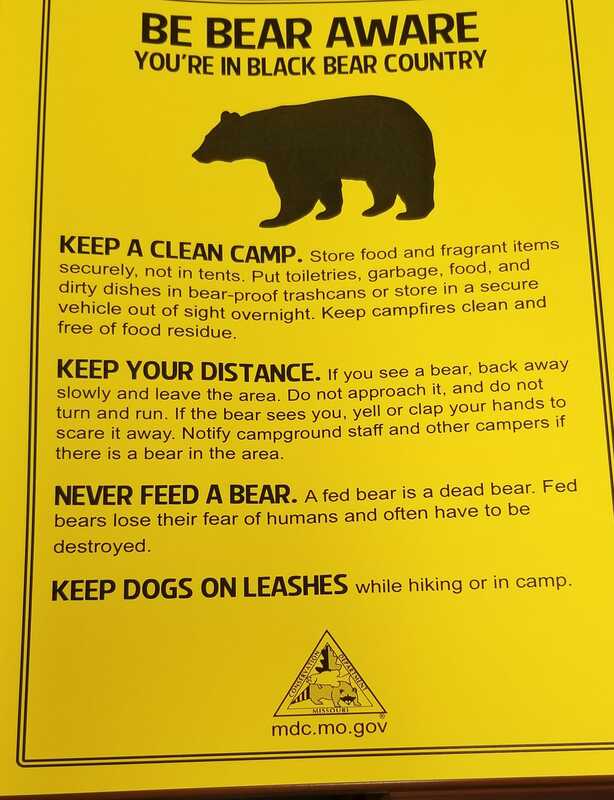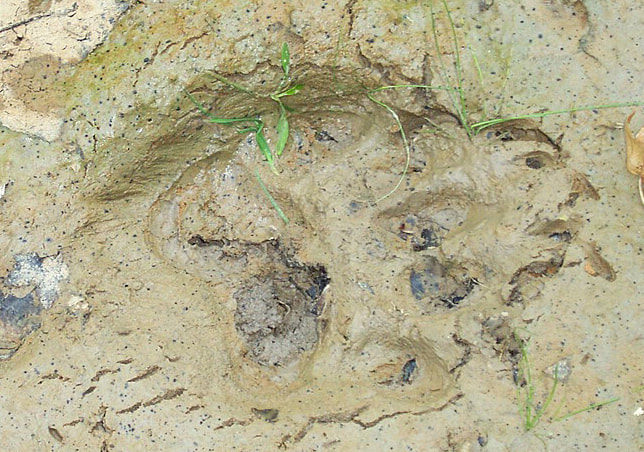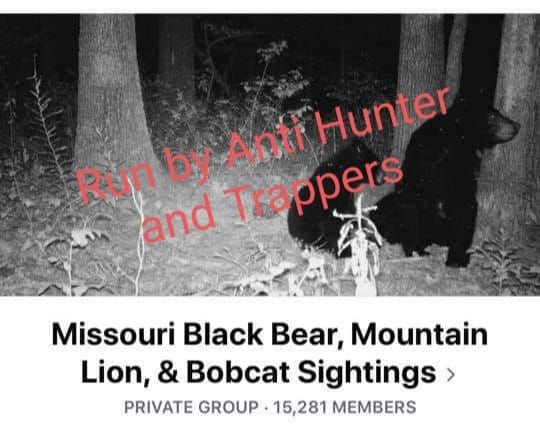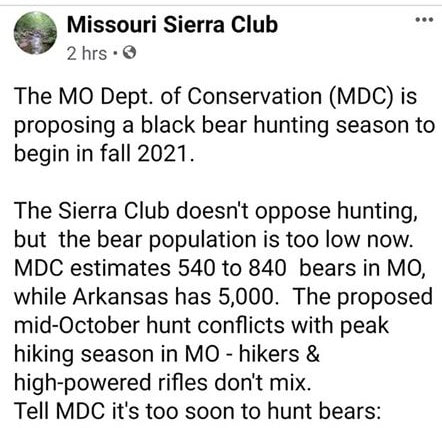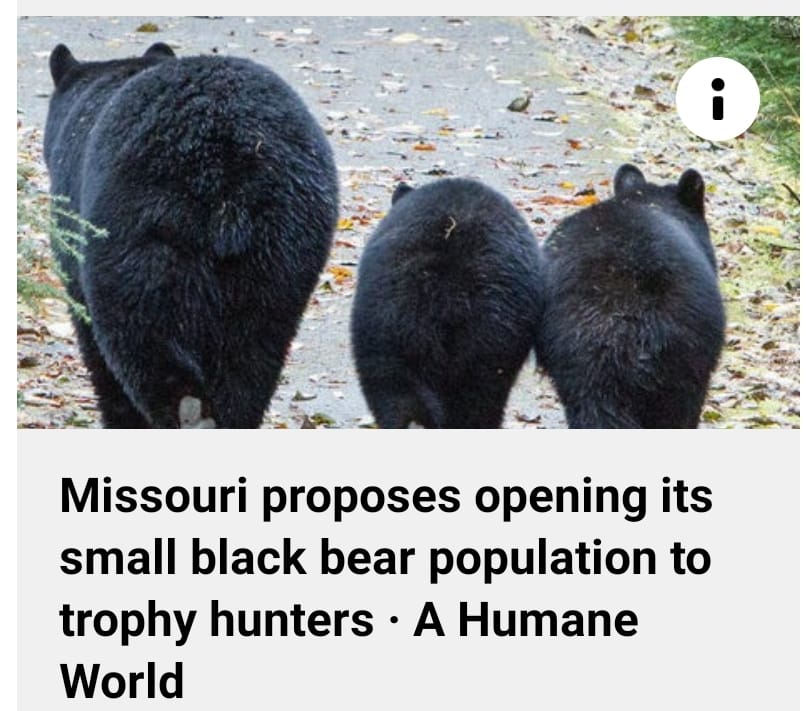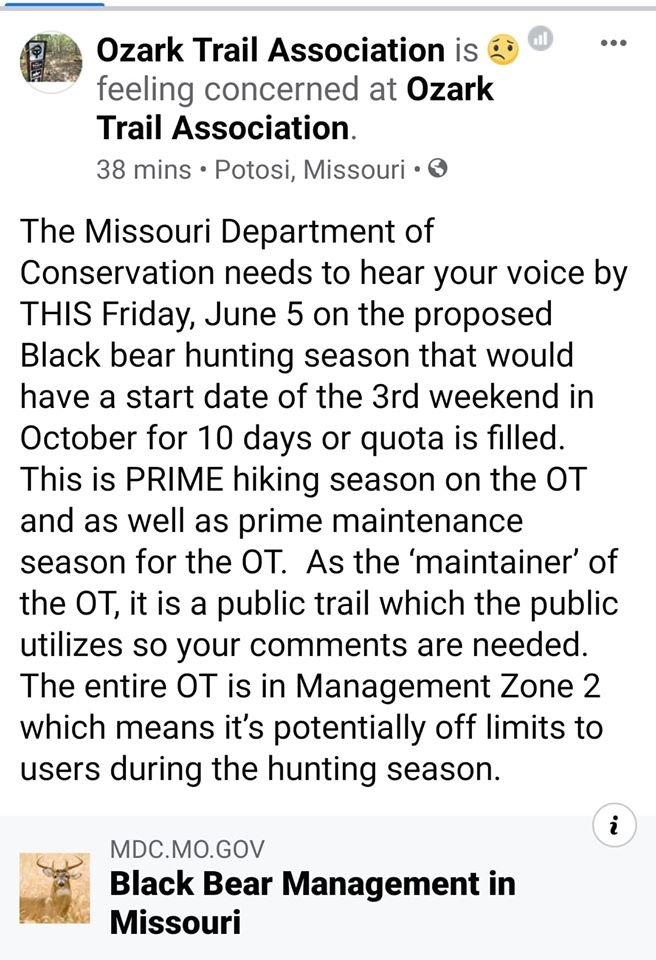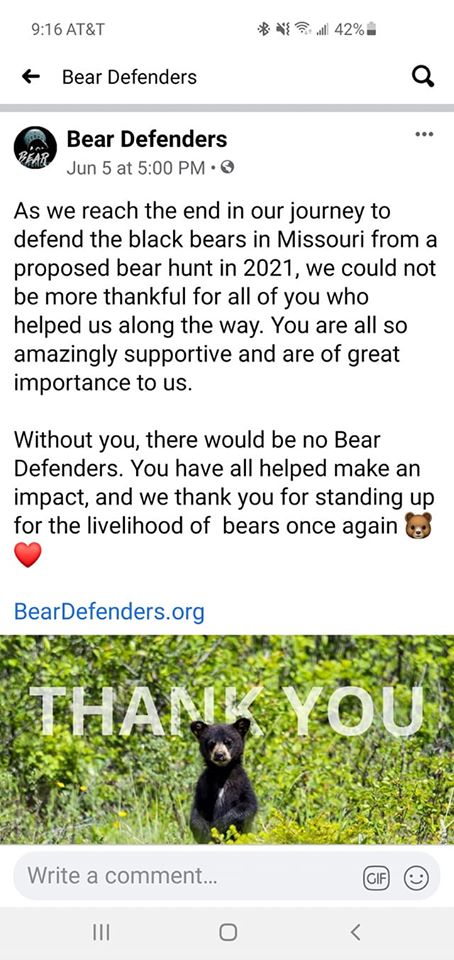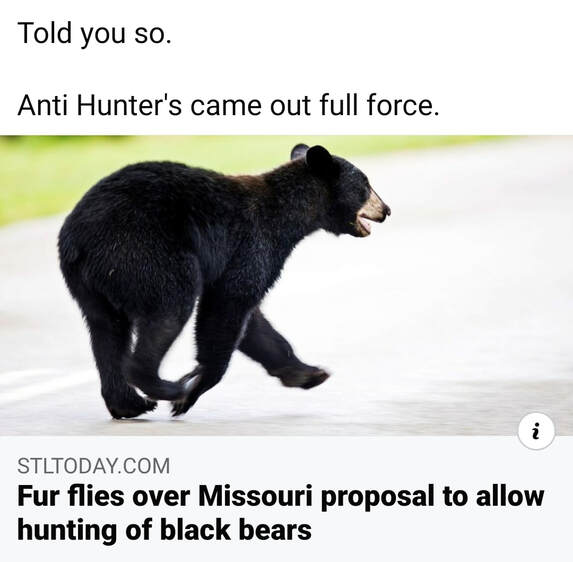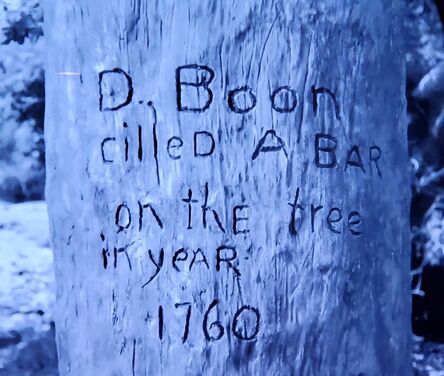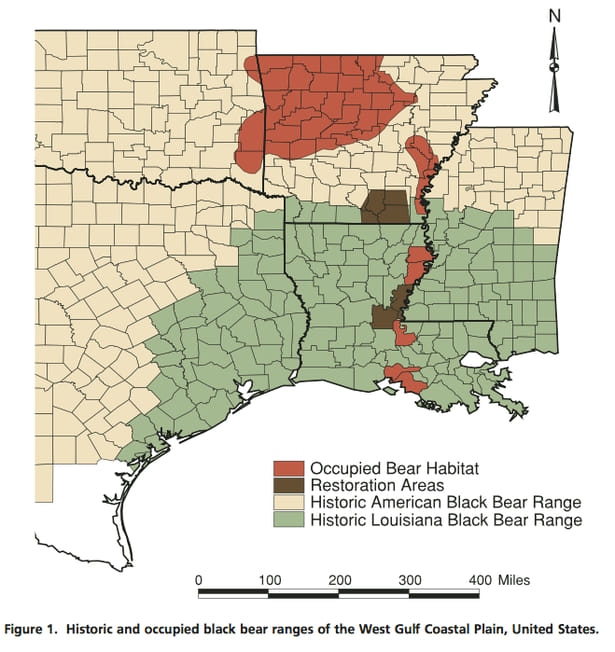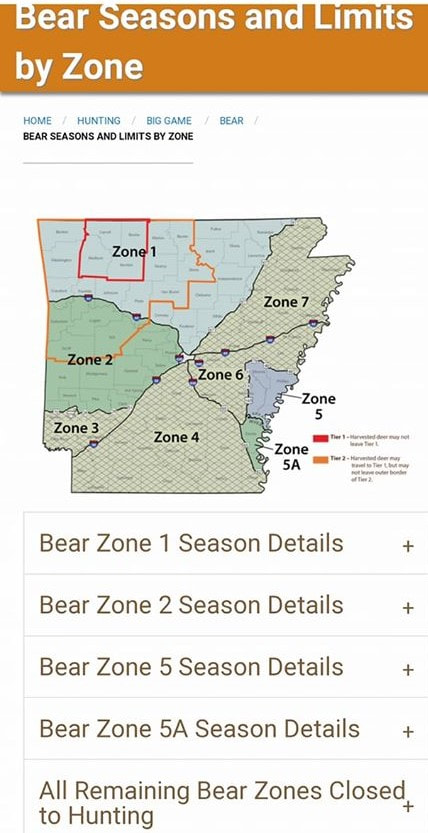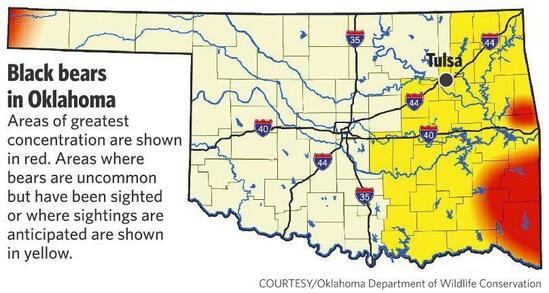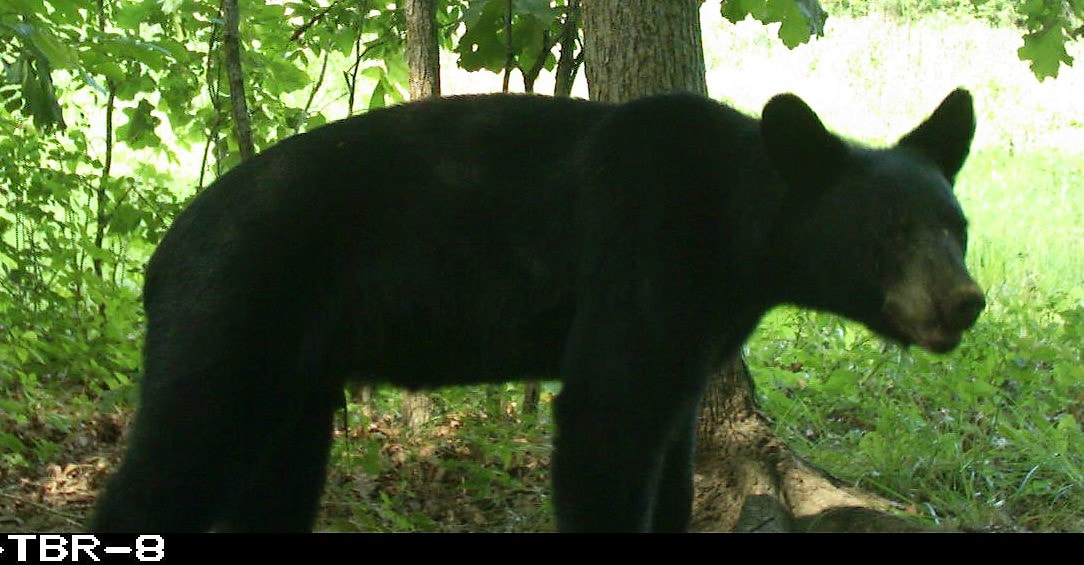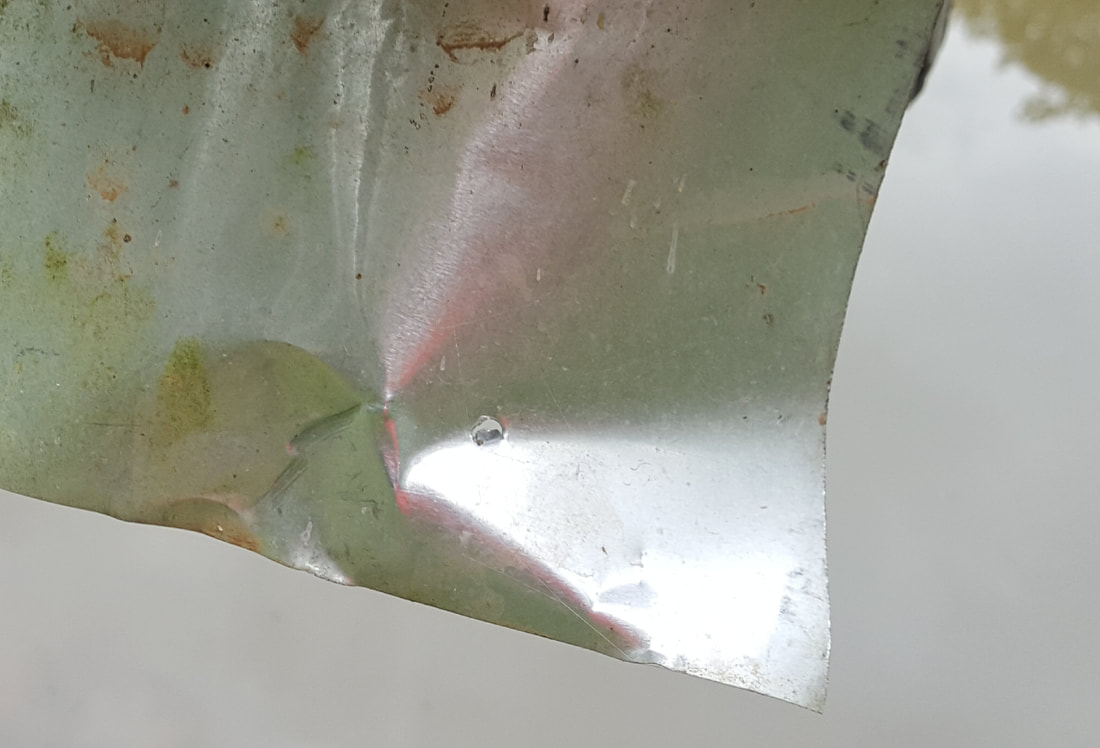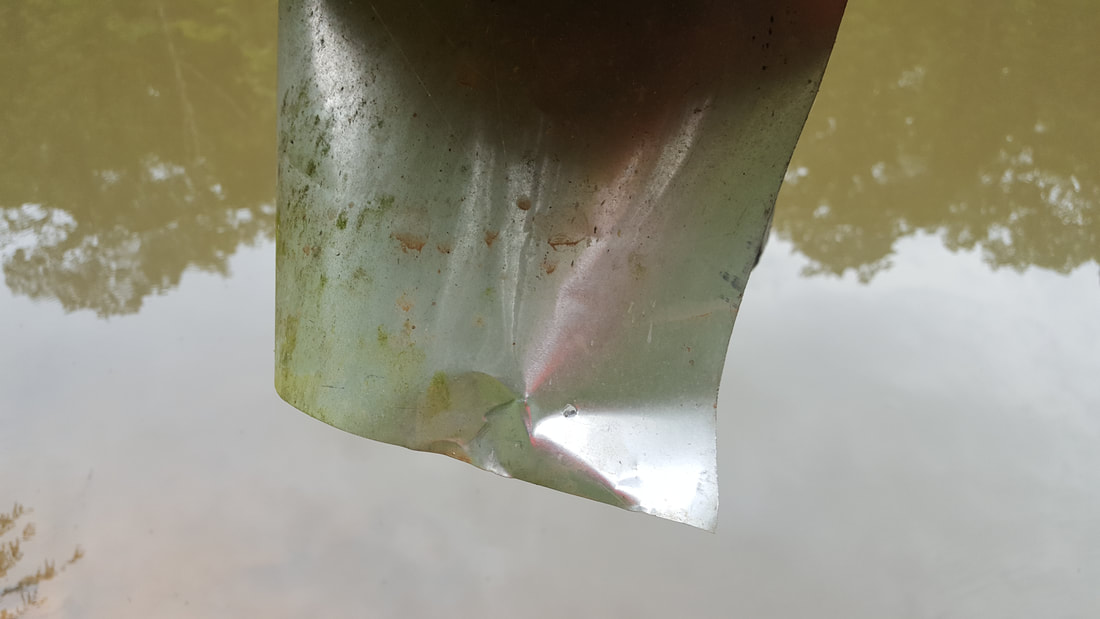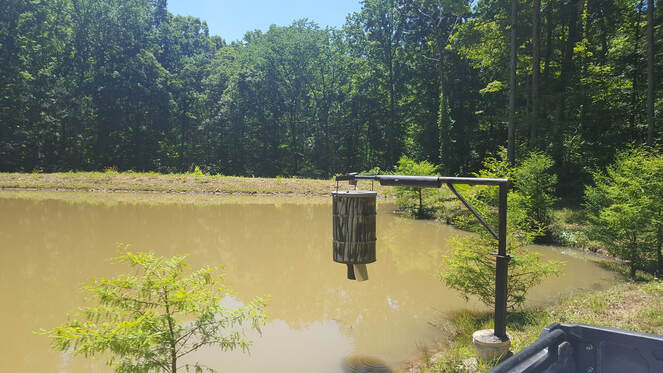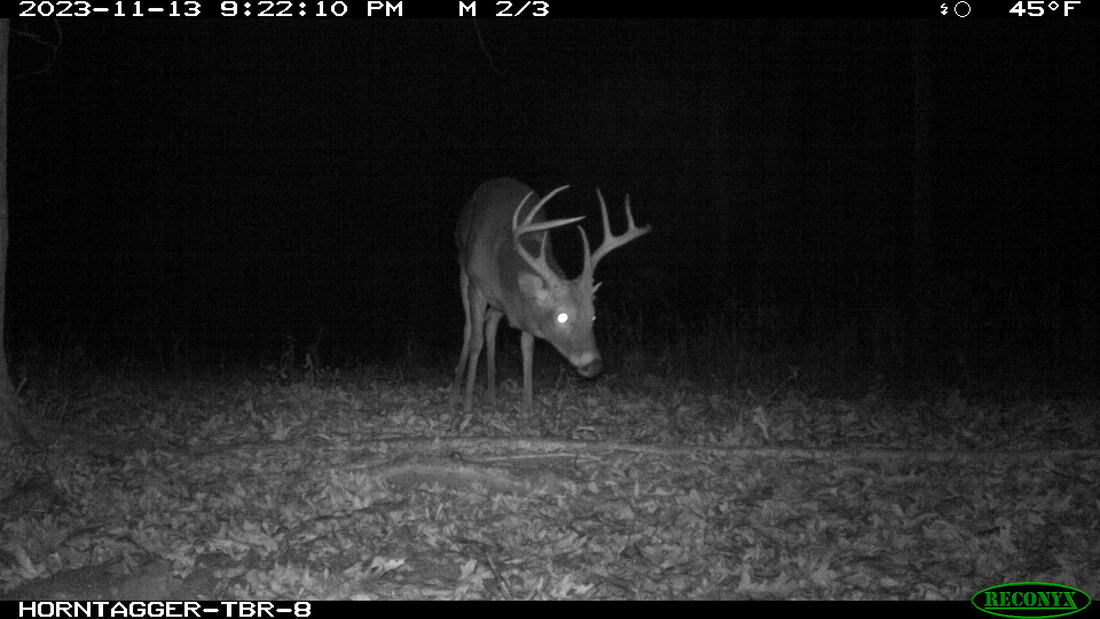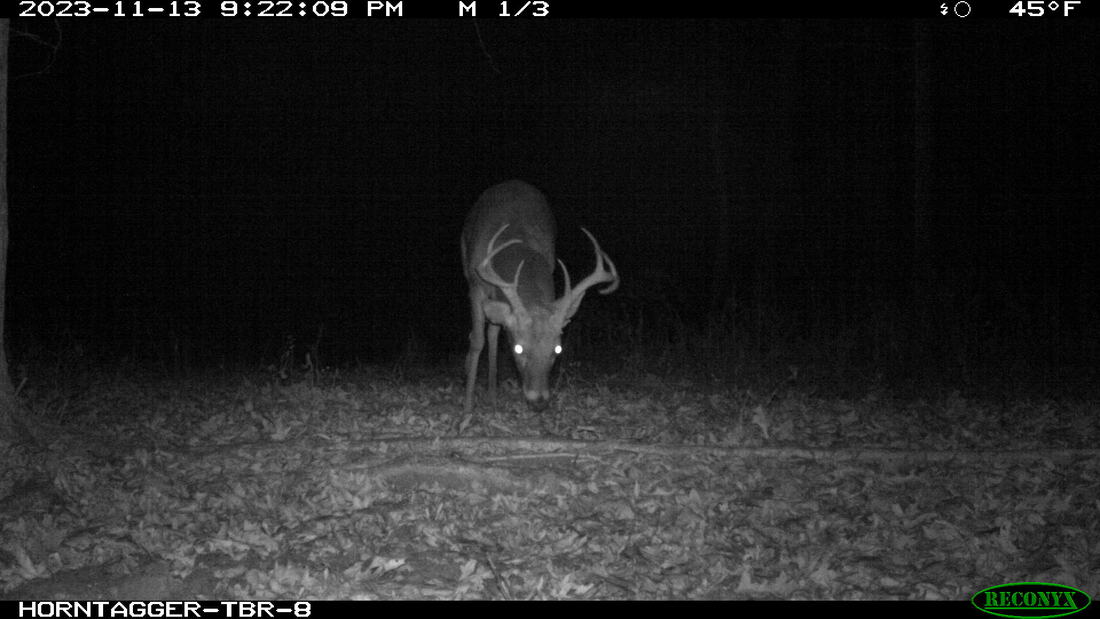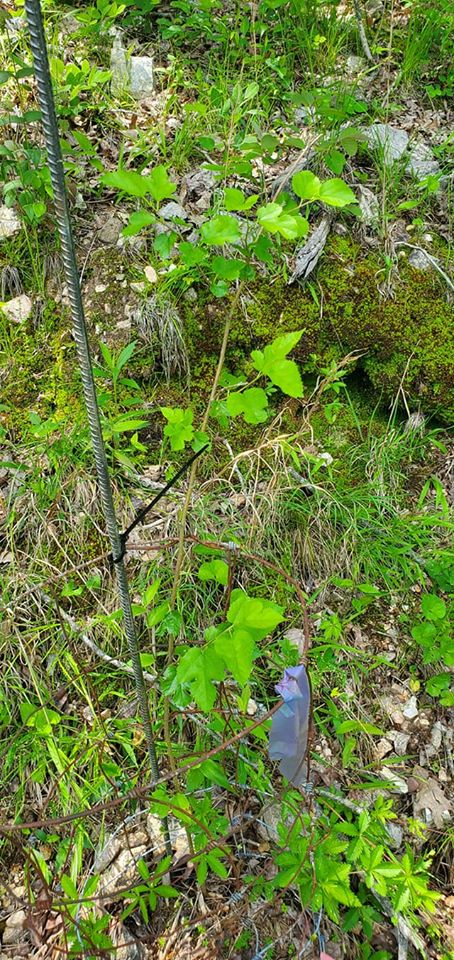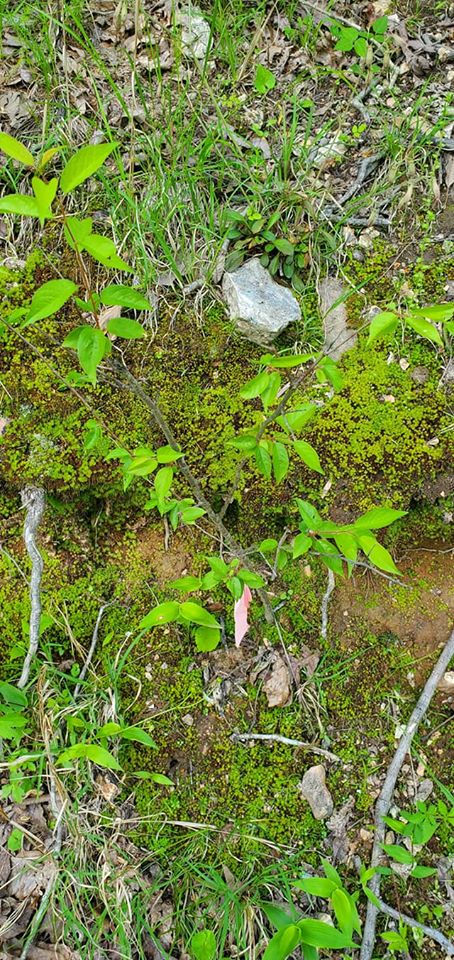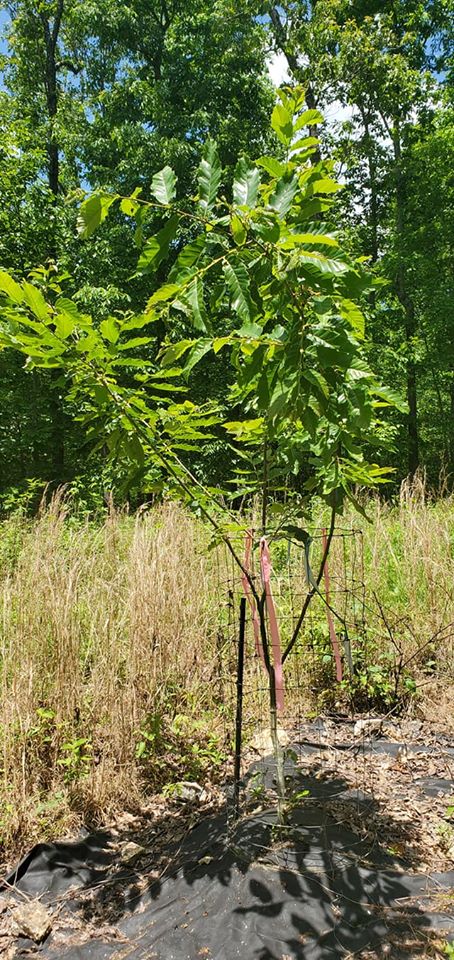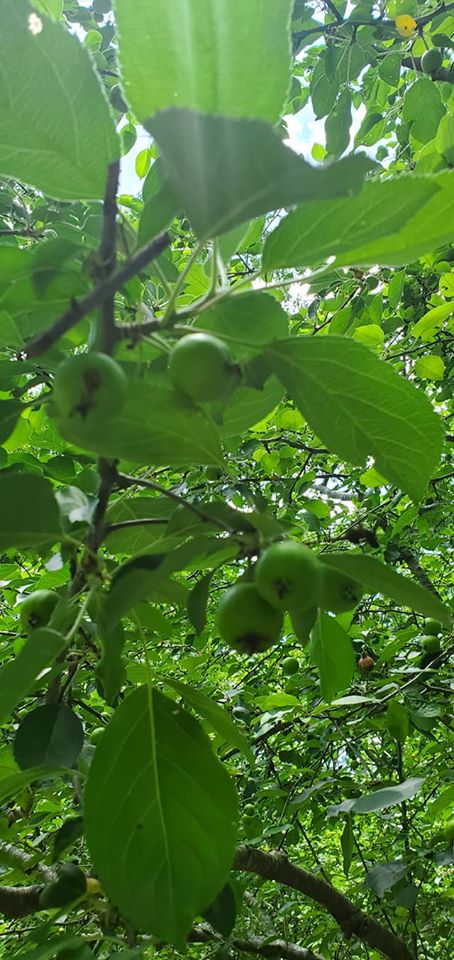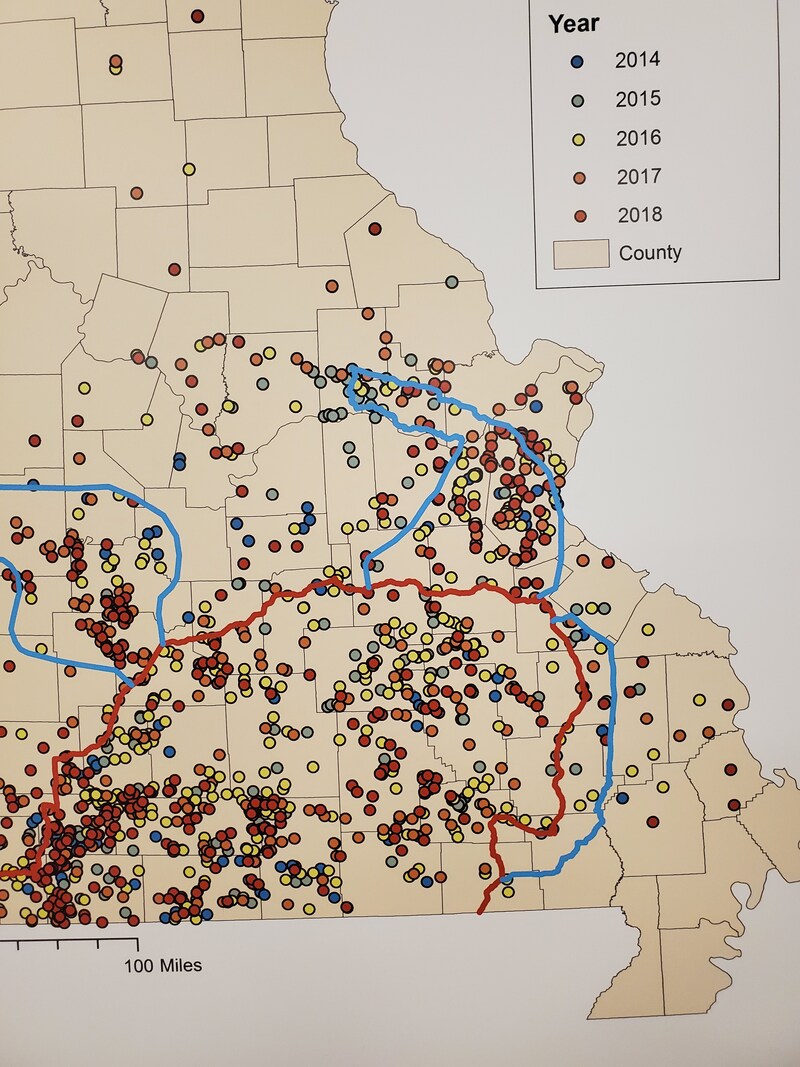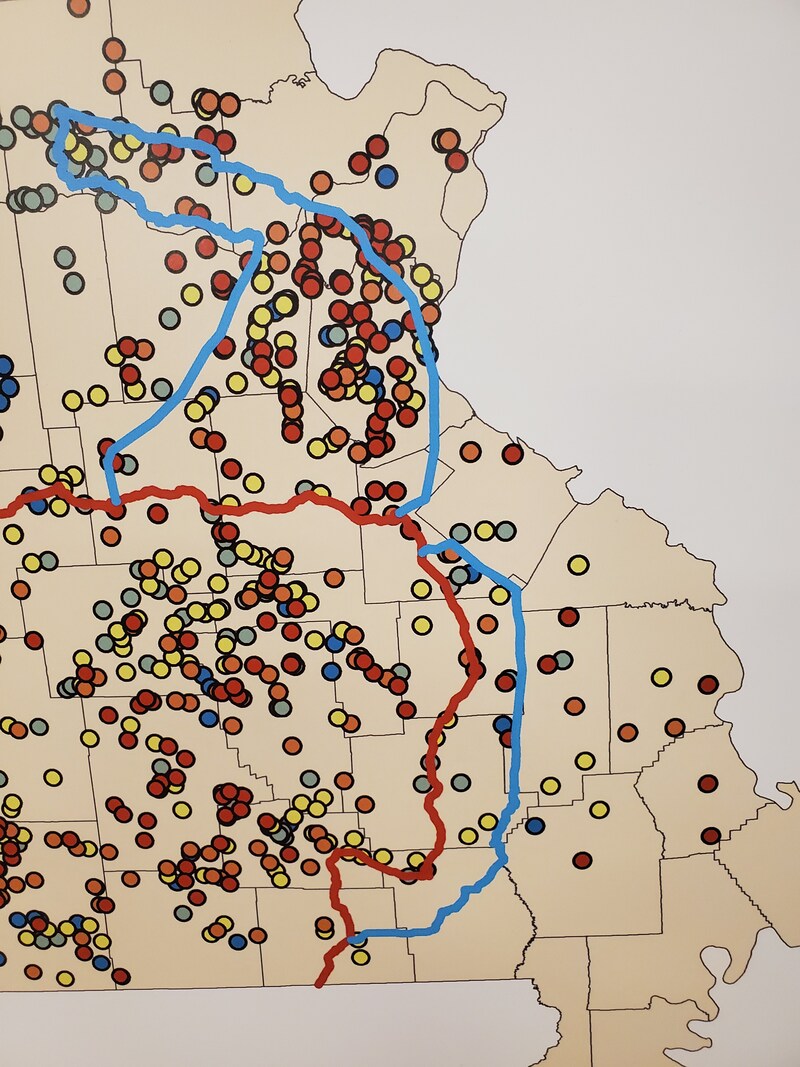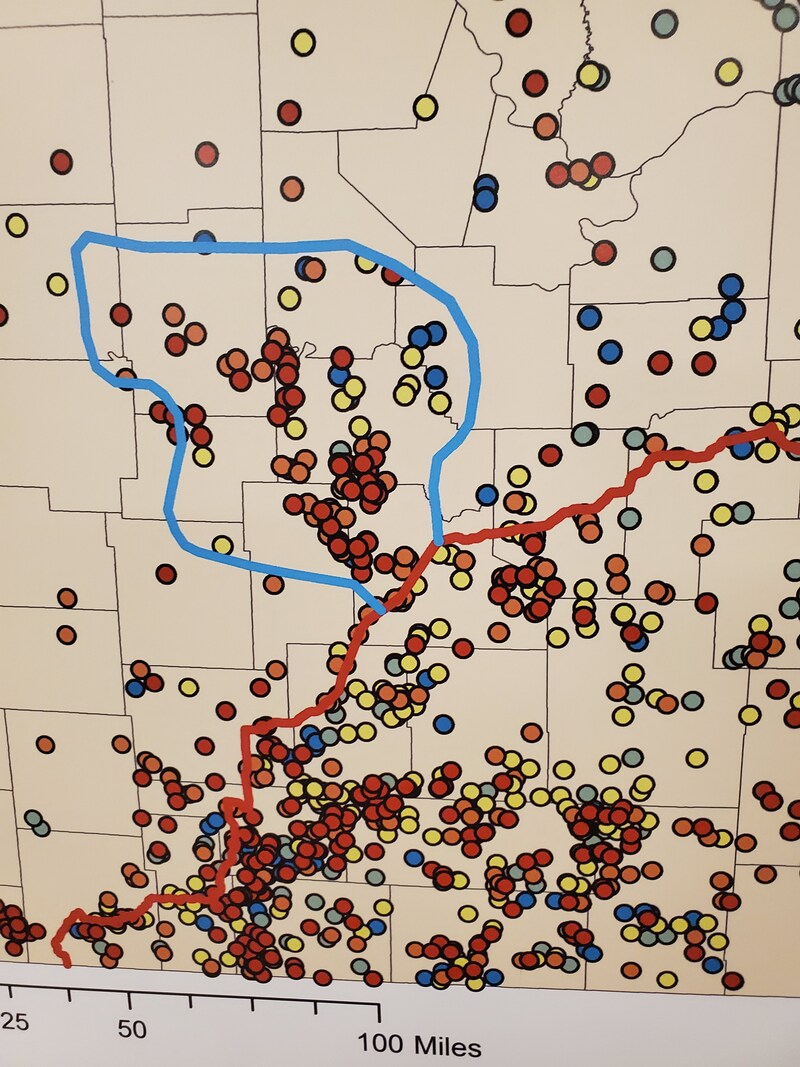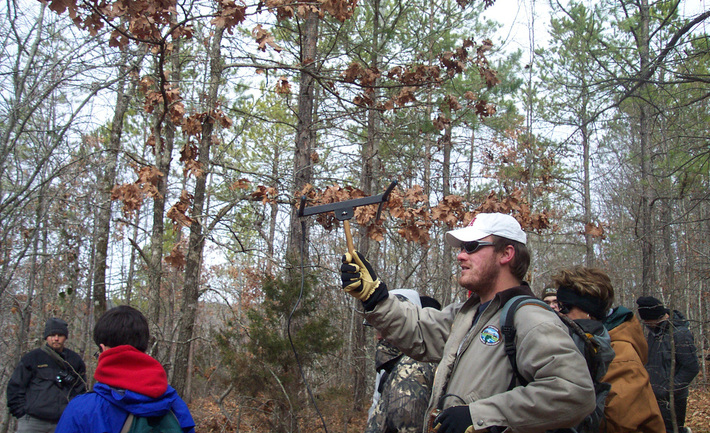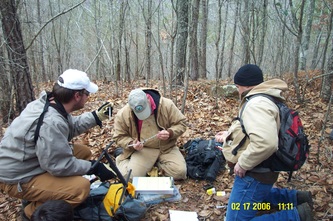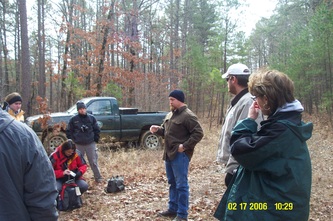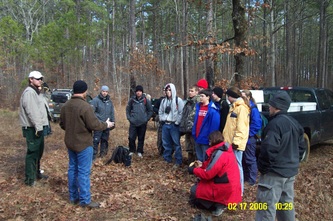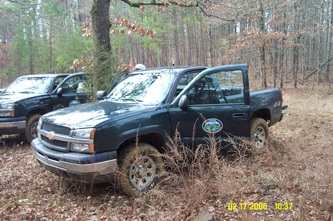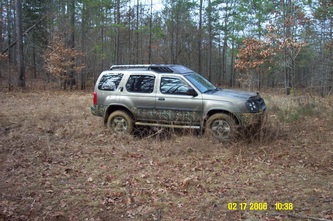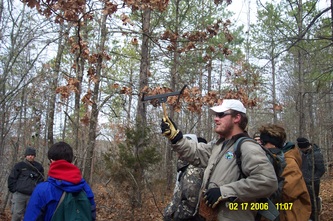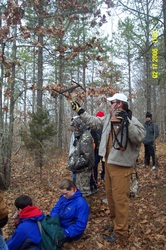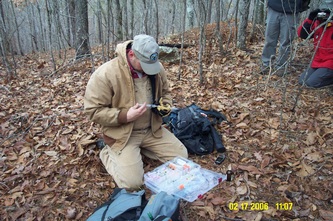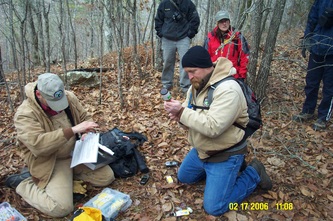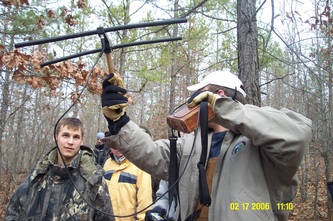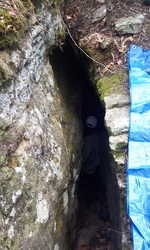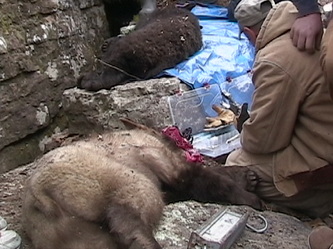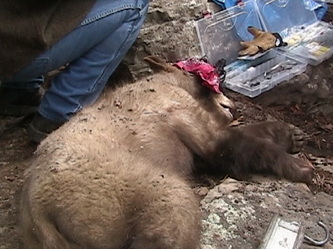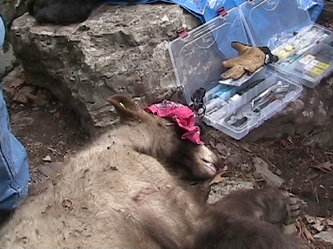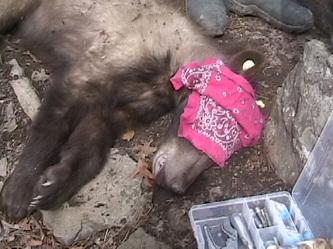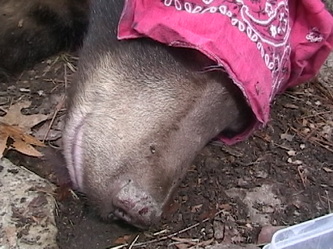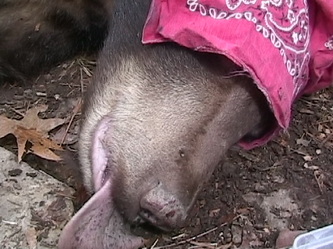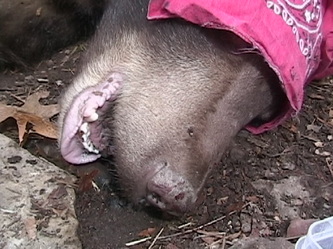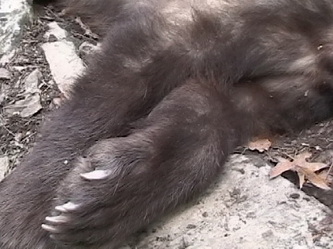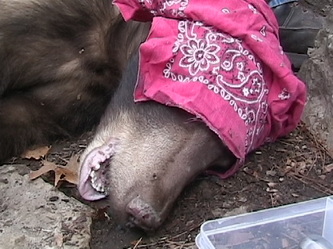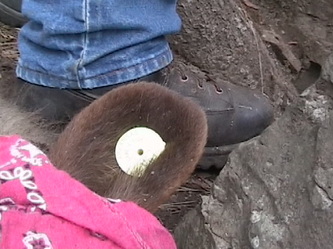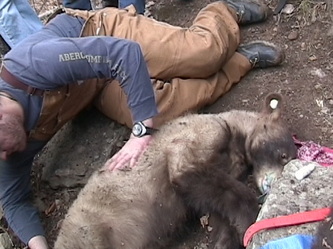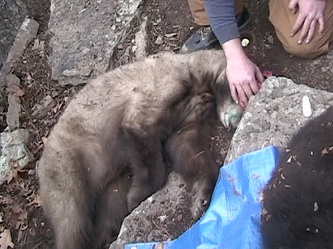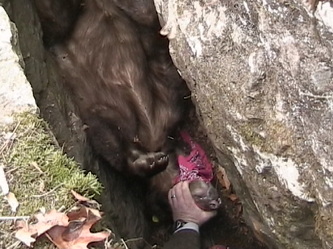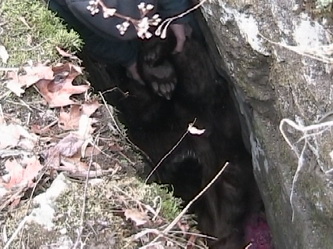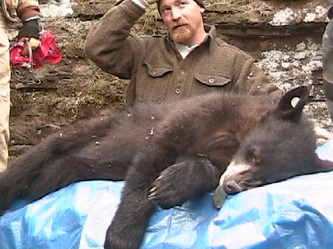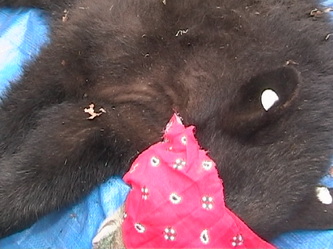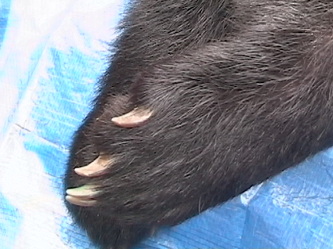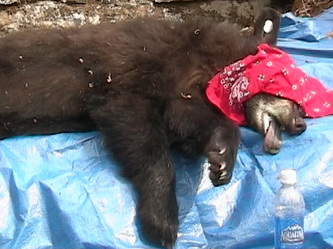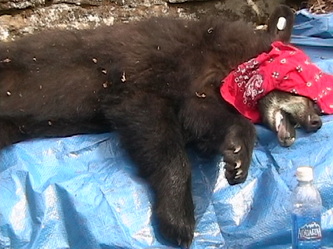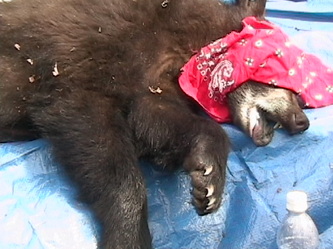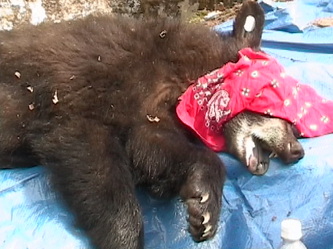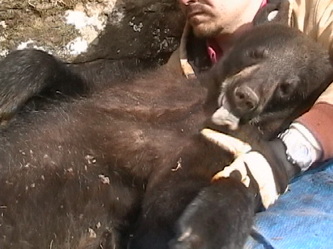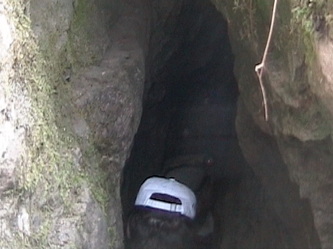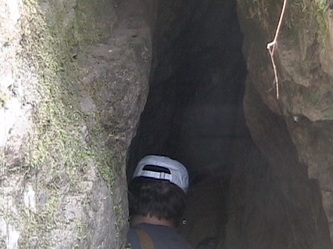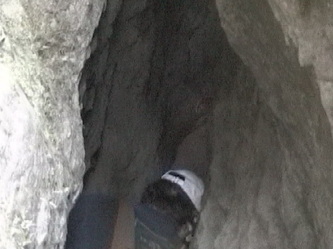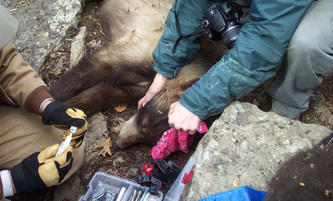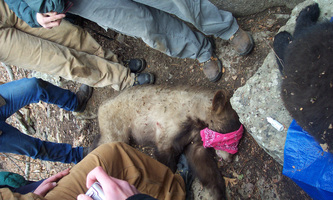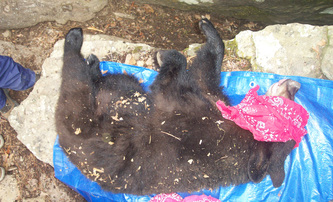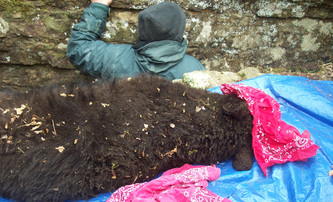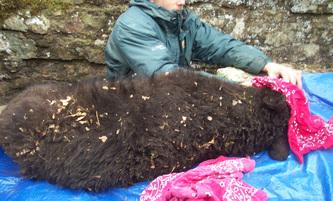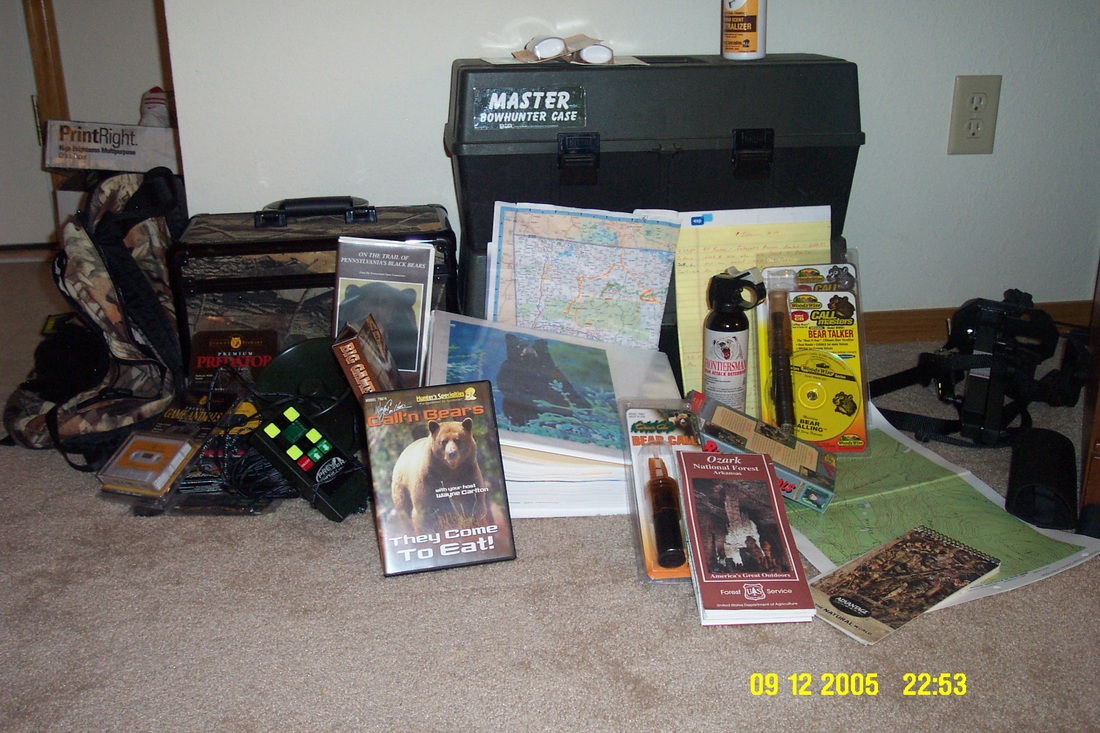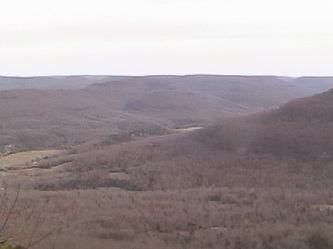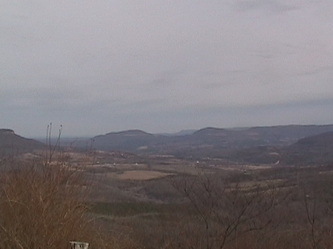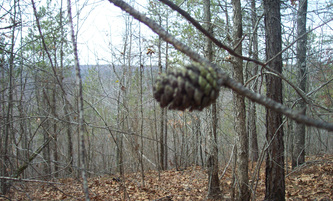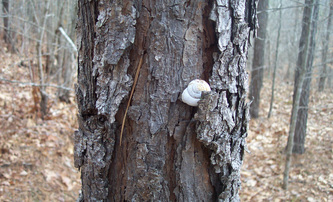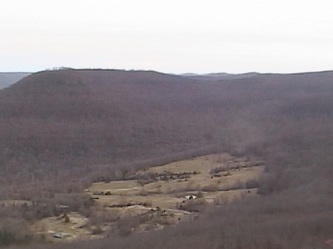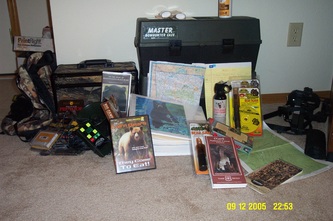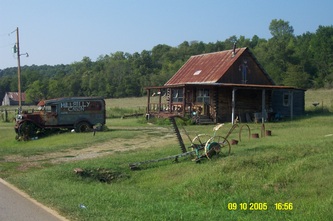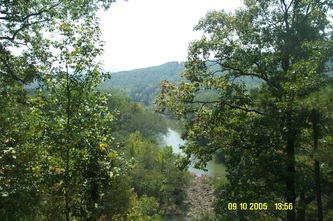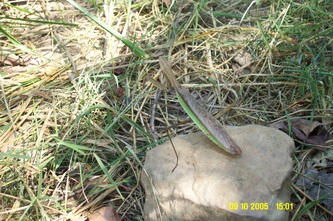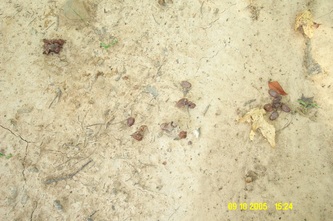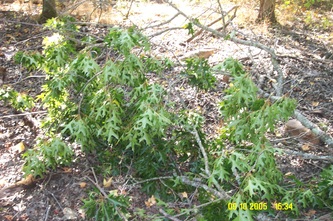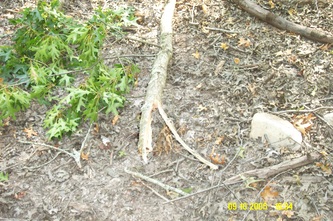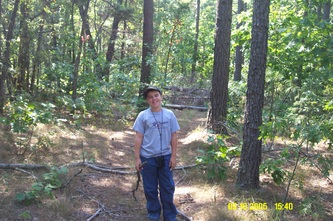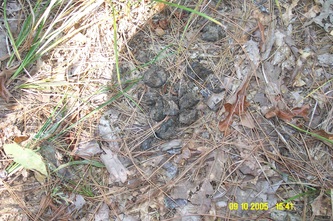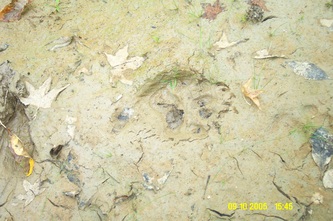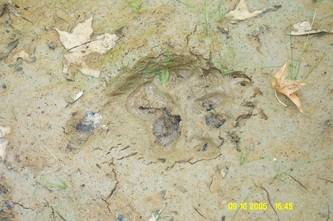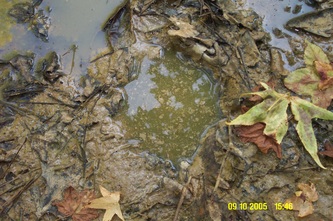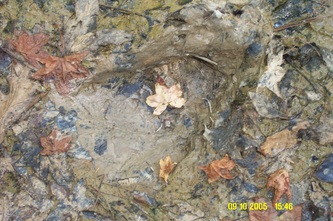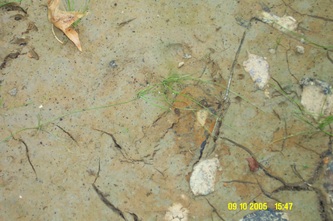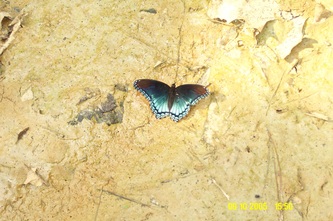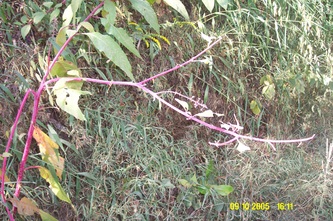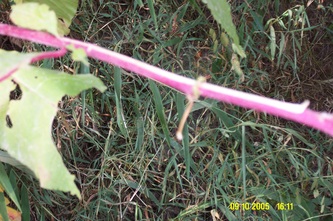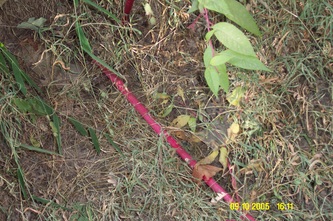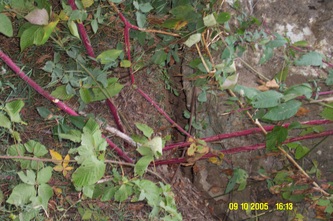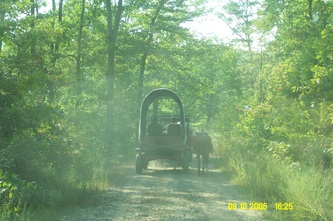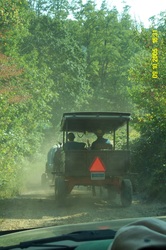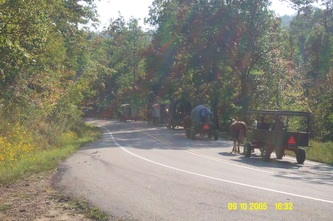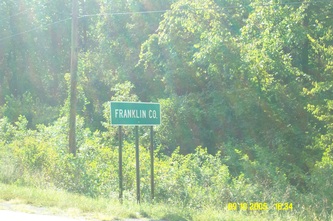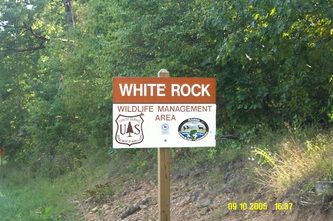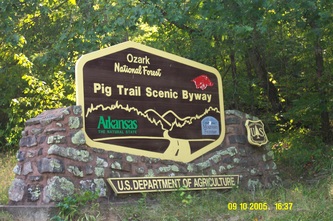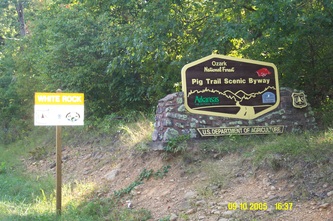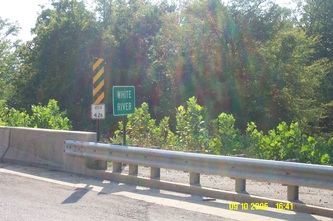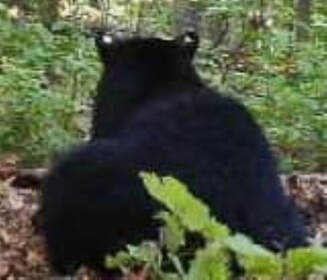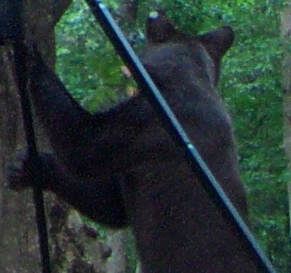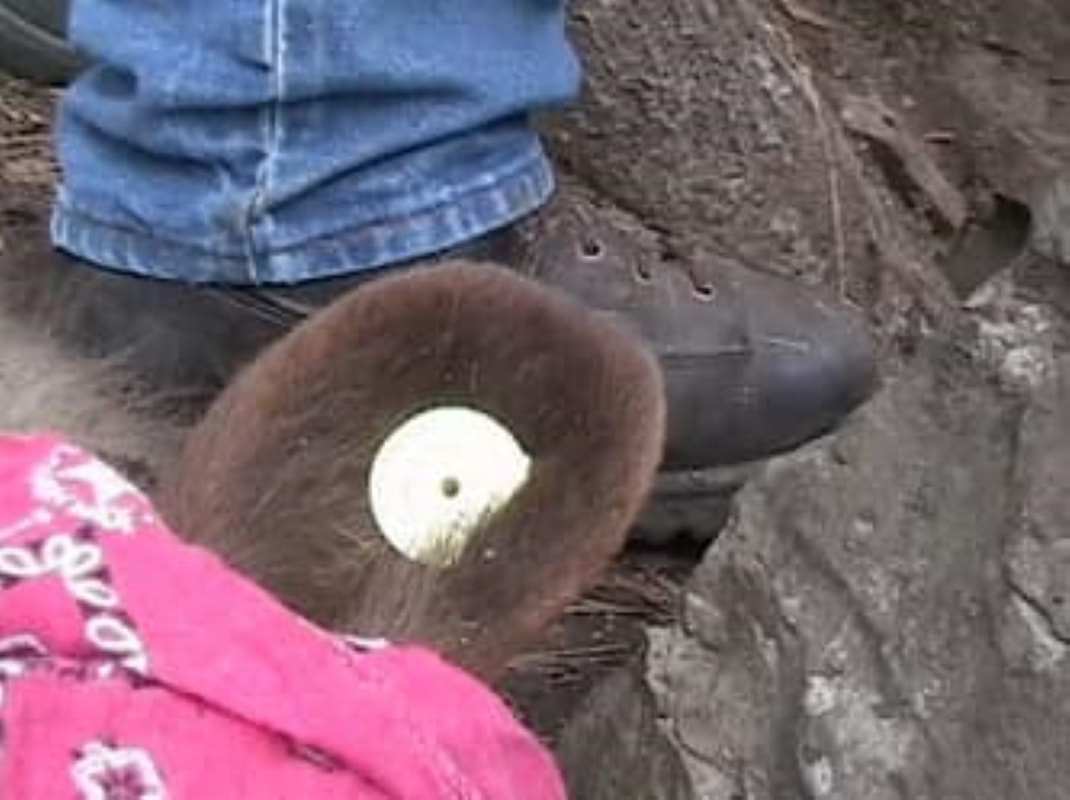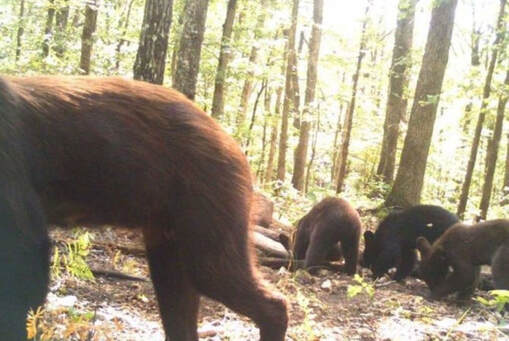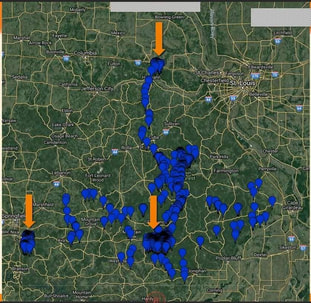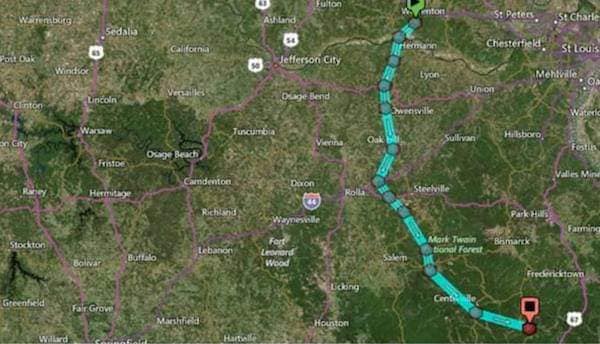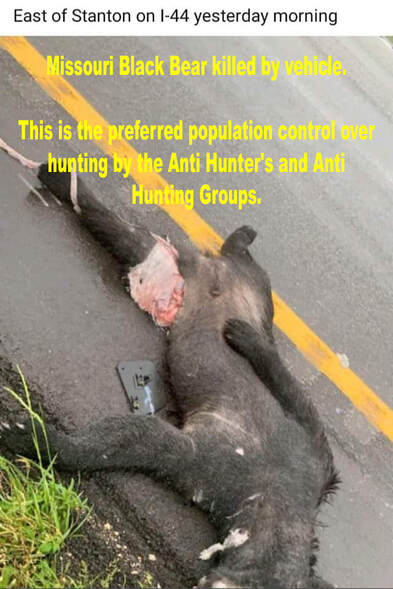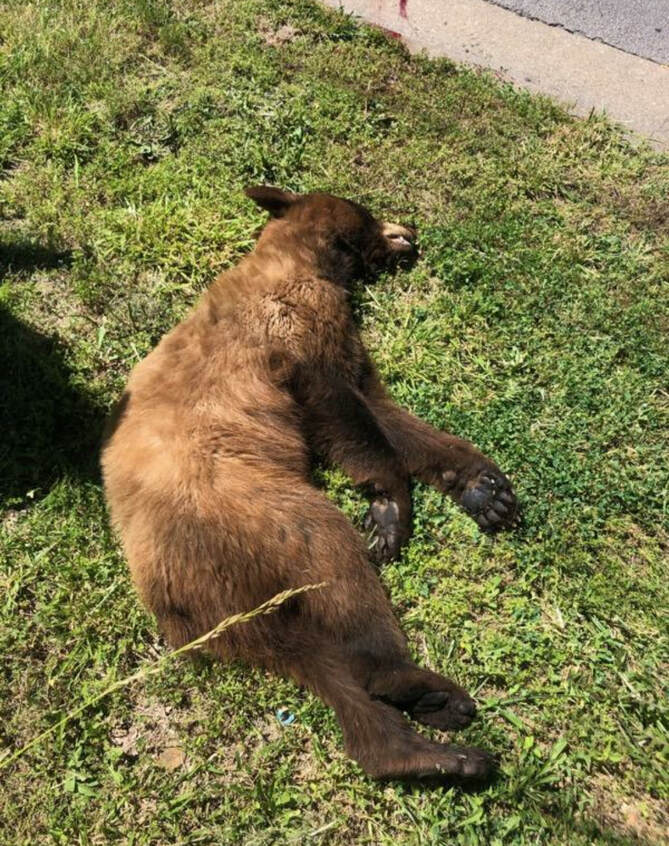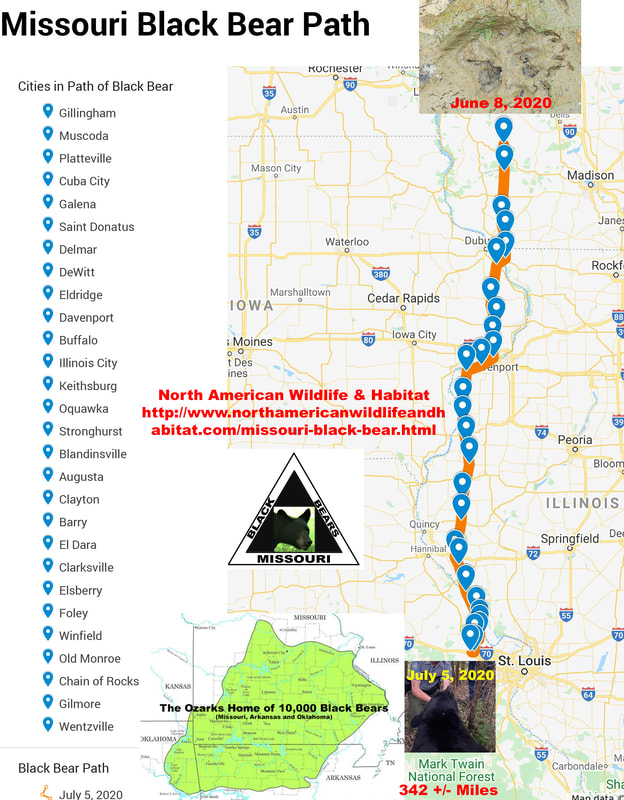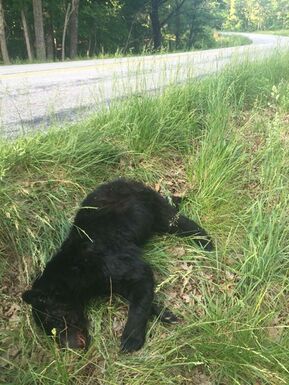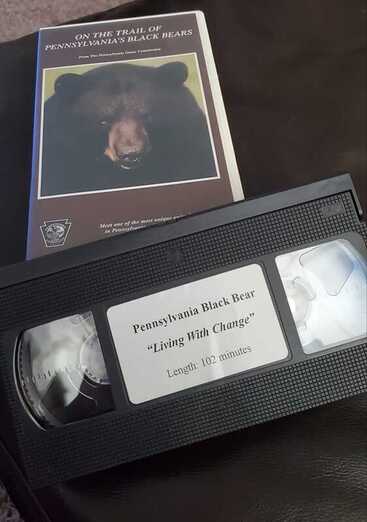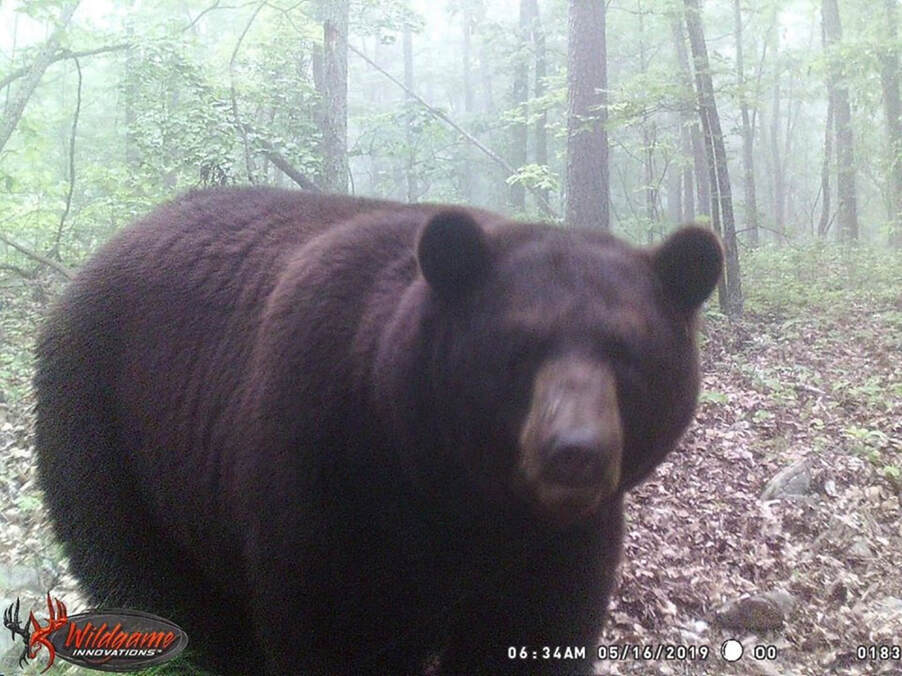Missouri Black Bear
Join the FACEBOOK GROUP - Missouri Black Bears this is a group for like-minded individuals of Missouri that want to show growing Missouri Black Bear Population.
The Missouri Black Bear is a hunting/conservation group designed to build a real resource for the serious hunters of Missouri. The Missouri Black Bear is the icon species for conservation.
Remember that this is a family orientated group, so please keep the post clean and respectful for the whole age group. Members from anywhere are welcome but the focus will be on Missouri.
Missouri Black Bear Population 2022
1st Missouri Black Bear Season Set for October of 2021
Missouri 2021 - 1st Black Bear Season Quota, Limits and Dates have been set.
Historical success rates with allowed methods are show also.
Population numbers have been updated to 800 to 1000 black bears in Missouri, which is still part of the bigger population that includes Missouri, Arkansas and Oklahoma.
Arkansas new population numbers should be announced in 2021 also.
Now to see how many Anti Hunting Groups file lawsuits to stop it!!!
Missouri Department of Conservation Commission Meeting
March 26, 2021
Missouri Department of Conservation Commission Meeting
July 9, 2020
Missouri Black Bear comment period is over. Nearly 4,800 Comments came in.
July 15, 2020 Regulations committee will be going over but Missourians won't here anything till September 3, 2020 at next meeting.
Of Course as I have reported those 4,800 comments came from Anti Hunting Groups HSUS, Sierra Club, etc. - 2 from California, 2 from Florida and 1 from Washington DC all putting out petition to stop Bear Hunting in Missouri for Missouri Citizens. Along with 1,000's of people out of state and in Europe that commented also.
May 30, 2020
I will repeat myself again - June 5, 2020 1st comment period ends. So till in the comment period before regulation get proposed then second round of comment period. Then finally the season will be announced along with any lawsuit from Sierra Club and HSUS.
HSUS will file a lawsuit to stop bear hunting and will pour MILLIONS to stop it as soon as MDC announces it. It will take 1000's of taxpayer dollars to pay lawyers to fight it. Along with all the TV, Radio, Social Media and Newpapers ads HSUS and Sierra Club will buy to spread lies to the NON HUNTING PUBLIC.
That will take a year so in 2021 into 2022 then lawsuit will be settled. But will take till May 2022 the season to be establish in the Fall of 2022.
With my estimate of 850 Black bears currently in state of Missouri with that being a conservative number using both Missouri Original numbers published and using Arkansas History of population growth.
Bear population will have grown to around 1,100 by 2022 and nuisance calls will have gone up dramatically.
Making it easier for MDC to implement a Black Bear season due to nuisance call and human safety.
My experience 14 years ago, Bear Denning with the Arkansas Game and Fish Commission - February 2006.
Big learning experience - Arkansas is the No.1 on Black Bear Reintroduction Success Story.
1950’s before restocking of Bears into Arkansas the population was estimated at 30.
In the late 1950, black bears reintroduction of black bears in the Ouachita and Ozark Mountains of Arkansas. That initial relocation of about 250 bears from northern Minnesota and Manitoba, Canada, turned into thousands of bears in the mountains of Arkansas, which then expanded into southwest Missouri and eastern Oklahoma.
Even the DNA trait 23% of bears reintroduce where phase color. That still exist today in Arkansas, can be seen in Missouri and Oklahoma.
It went from 280 bears in 1950 and 70 years later along with 40 years of bear hunting, Arkansas is now home of 6,500 Black Bears, that come in and out of Missouri and Oklahoma and Region with 10,000 Black Bears.
Updated Missouri Black Bear Maps - Now able to change layers
(aka year range)
2019
2014 thru 2018
2009 thru 2013
2004 thru 2008
https://nature.mdc.mo.gov/discover-nature/report-wildlife-sightings/bear-reports
Bear Hunting Magazine Podcast
https://podcasts.apple.com/us/podcast/bear-hunting-magazine-podcast/id1436632534?i=1000477534745
One population of Black Bears spanning multiple states.
Great Information on the podcast.
A podcast all about Missouri black bears
Bear Hunting Magazine - http://www.bear-hunting.com/
Missouri Department of Conservation Bear Page
https://nature.mdc.mo.gov/discover-nature/report-wildlife-sightings/bear-reports
Missouri Department of Conservation Commission Meeting - May 28, 2020
Comments coming from out of state and other countries
I guarantee you they are from the Anti Hunting Extremist.
Part 1
Part 2
Part 3
Missouri Department of Conservation - Reply
ONE BLACK BEAR POPULATION - SPANNING TWO STATES that is the reality
Example of a Young Male Missouri Black Bear - This what you don't want to shoot!!
May 19, 2020 - I have made my comments to the MDC. You will have to decide on you own comments.
I would not shoot this bear if was able to judge it on my property. Black Bears are the hardest animal in the world to field judge all you see is the black blob walking through the woods.
For most hunters and landowners in Missouri in the beginning a 80 pound bear will look 400 pounds and that’s what young bear will be in size by October in Missouri. Every bear to the average Joe is 600 lbs. judging them is rough and only a select few are any good at it.
Not hunting them over bait is a big mistake especially with the numbers that state has. Allow bait with no take of sow with cubs. I foresee Missouri hunters filling a quota with many small bears. Long Legs, Long Ears and Long Face make a young bear and without time to figure that out you going to have big problems.
So, the MDC is not going to use bait and increase cubs getting shot, sows and sows with cubs. That is what you want for your first bear season a cub or sow.
That the great thing about baiting is you get to observe the animal, so you don’t shoot sows with cubs or cubs.
Landowners can take time make sound wildlife management decisions to shoot or not.
You start leaving Cubs without sows you nuisance complaints will skyrocket.
No Bait regulation I understand for public lands you do not want someone to just roaming into a bear bait.
Arkansas has same regulation. But Private Land 93% of Missouri. If you are lucky few landowners that get drawn for a bear tag and have land then, it would be easy to make it legal just for that landowner.
If you have someone that hunts on a landowner, that landowner would just have to apply to bait. As a side note: It will be boom or bust the 3rd week of October and baits will not be as effective when acorns start falling so, some years baits will work like suppose to some years baits will do poorly.
It’s not like you have to re-invent the wheel – New Hampshire Game and Fish Department already has it spelled out. (During the baiting seasons, hunters holding a baiting permit (and current NH hunting license and permits), are permitted to hunt bear over bait in certain locations. Hunters planning to hunt over bait must file for a permit from Fish and Game, which requires a landowner signature giving permission to place bait on their property.
Baiting applications may be printed online or picked up at any Fish and Game office. There is no charge for a bait permit.)
Part 2
I believe you have missed a critical historical link that is hurting the Missouri Black Bear information to the public. People do not understand Bear don’t care about imaginary lines on a map.
You are seeing people "Feel" that Missouri bear population so few, why hunt them. 850 and you never even mention the 6,000 bears to the south MDC has completely left out to the public in every public press release and video is they separate Arkansas Bear population, that is a line on map and the Arkansas population has expanded.
While we may have had few Native bears and our population is growing on its own, we are still getting the expansion from Arkansas.
You can't separate the history or the population, they are forever connected. Even the DNA trait that 25% of the bears in Arkansas is Phase color which is what the restocking of bears was also. 1950’s before restocking of Bears into Arkansas the population was estimated at 30
They restocked 250 bears into Arkansas in 1950’s.
It went from 280 bears and in 1990 just 40 years their where over 2000 bears
2010 the current population is over 4,000 to 5,000 bears.
That is with hunting for around the last 28 years and taking currently around 300 to 400 bears a year.
The Arkansas Game and Fish Commission (AGFC) responds to nearly 200 bear nuisance calls a year.
There are about 6,000 bears in the state, according the Arkansas Game and Fish Commission.
Bear season open in 1980.
Just raised the limit from 350 to 500 for fall of 2020.
Alaska Department of Fish and Game
Give Biological, Scientific and Management Reason for using Bear Bait
https://www.adfg.alaska.gov/index.cfm?adfg=bearbaiting.bearchoice
Missouri Department of Conservation – MDC Bear Biologist Laura Conlee in Webcast May 27, 2020 said that Bears are hard to Judge and restriction to only Single Bears.
Reason why Bear Baiting is a must in Missouri. Especially when the Acorn Drop will have already taken place by the 3rd Monday of October.
The Final Points prove that not having bait concretes why she is correct in the statement that bears are hard to judge, but WRONG on not having bear bait as a management tool. So here is the biological sound, proven by biologist why you should.
1. Spend time watching bears TO AVOID SHOOTING A FEMALE WHO HAS CUBS. The size and shape of bears provides clues to their age, sex, and species. The BEHAVIOR OF A BEAR AT BAIT SITE MAY INDICATE THE PRESENCE OF OTHER BEARS OR CUBS. Be patient and observant before deciding on harvesting the bear. Judging bears is an art but can be learned through time with long hours of experience, patience, and dedication.
2. Harvesting too many females reduce population growth. This in turn can result in fewer bear hunting opportunities, especially in GMUs with biological concerns pertaining to the black bear population.
3. Females: A large female with cubs may come into a bait station alone and multiple times, especially when the cubs are young. For safety, the mother bear may "stash" the cubs in a nearby tree before she moves in to check out the bait site. If you are planning to harvest a male, it is imperative that you wait a significant amount of time – and observe carefully to ascertain the bear’s gender and reproductive status -- before taking steps to harvest it. If you suspect the bear is a female, check the mammae to see if she is lactating.
Alaska Department of Fish and Game Online Bear Baiting Clinic
Choosing Which Bear to Take
Alaska Department of Fish and Game biologists monitor the number and sex of bears taken from each Game Management Unit (GMU), and seasons and bag limits are sometimes adjusted to manage population size. Most hunters prefer to take male bears. Why select male bears?
Male bears are larger than females and provide more meat.
Male bears provide a larger pelt for trophy value.
Bear trophies are "scored" by skull size, and male bears have larger skulls.
Adult male bears kill cubs and other smaller bears.
Harvesting male bears has the least impact on populations because one male can mate with several females.
Female black bear reproductive potential (numbers of young per lifetime) is relatively low compared to many mammals, including most ungulates, other carnivores, and small game animals.
Harvesting too many females reduces population growth. This in turn can result in fewer bear hunting opportunities, especially in GMUs with biological concerns pertaining to the black bear population.
As a bear baiter, you have the opportunity to look a bear over closely, possibly through multiple viewings, before deciding to shoot. You want to assess which species it is (black or brown/grizzly), its size, its gender and, if applicable, the condition of its pelt.
Size Determination
Black bears are the smallest of North American bears. Adult bears stand about 30 inches at the shoulders and measure about 60 inches from nose to tail. On average, in spring, an adult male weighs about 180-200 lbs, an adult female 120-140 lbs, and a yearling 25-50 lbs.
All bears are typically at their lowest annual weight when they emerge from winter dormancy. They may be 20% to 30% heavier in the Fall when they are gaining fat for the long winter months of hibernation. Most hunters are looking for a larger bear, so what can the smart hunter do to improve the odds of shooting the "right" bear?
The "stick" method: When setting up your baiting site, place a pre-measured stick in the ground next to the bait or place marks on the nearest tree. When standing on all fours, bears taller than 34” at the top of the shoulder are larger animals.
The "bait barrel" method: Compare the bear’s shoulder height to your bait barrel for reference:
A bear measuring 1 foot taller than a 55-gallon drum barrel laid on its side = a 250-300 lb bear.
A bear measuring 15-18” taller than, or twice as tall as, the horizontal barrel = huge bear.
Another way to estimate the size of bears visiting your bait site is to find soft areas in the soil where bear prints can easily be observed. Take a close look at the width of the front paw; if 3-3 ½” you’re likely looking at a small bear, 4-5” a medium bear and 6-6 ½” would be a very large black bear. Be sure it’s not a brown bear track you’re looking at. Black bears have sharply curved claws that are rarely over 1 1/2” in length. Note the difference in claw shape and dimensions in the following photos.
Sex Determination:
Another skill learned by experienced bear hunters is the ability to determine the sex of the bear they are observing. Not all methods are foolproof, but time in the field and experience can improve your abilities. With patience or luck you may observe the bear urinating. A female bear may be in a squatting position and will urinate towards the rear while a male bear will urinate forward. Young male bears may also squat to urinate. Large males may urinate while stretching or walking. The penis sheath and testicles on male bears may be observed, especially if you have good optics. In spring, the female bears may be lactating so visible mammaries would be a useful indicator. Early summer is mating season for bears. With the females, the vulva may be visible when she is "in heat." By hanging a scent bag near your baiting site, you may entice the bear into a standing posture, where you may have a better chance to determine whether it’s a male or female.
Behavioral Characteristics:
An observant bear hunter can also use bear behavior to determine what type and size of bear they are looking at.
Young bears: These are often the first bears to come to a bait site. They usually appear nervous, cautious, and alert. Young bears sniff the air, constantly checking for threatening scents including of large male bears. The movements of young bears can be hurried and they may grab some bait and leave the site.
Large males: Since big males are typically more nocturnal than other bears, the late evening or very early morning stand may increase your odds. Large males often display dominance to other bears through aggression or vocalization. During May and June, mature males search for females in heat. Big dominant males tend to be less nervous or concerned about other bears.
Females: A large female with cubs may come into a bait station alone and multiple times, especially when the cubs are young. For safety, the mother bear may "stash" the cubs in a nearby tree before she moves in to check out the bait site. If you are planning to harvest a male, it is imperative that you wait a significant amount of time – and observe carefully to ascertain the bear’s gender and reproductive status -- before taking steps to harvest it. If you suspect the bear is a female, check the mammae to see if she is lactating.
General Judging Guidelines
Here are some tips for differentiating between larger and smaller bears at a distance.
Small Bears:
Big ears when compared to the size of head
Lanky appearance with long looking legs
Head appears large in relationship to the body
Head will have an elongated, triangular appearance--narrow or pointy look
Neck will have a long, thin appearance
Hair will be longer and fluffy (applies to females as well)
Large Bears:
Blocky head
Thick muzzle
Ears appear smaller compared to size of head
Ears will be set wide apart on the head
Neck appears thicker and shorter in relationship to the body
Legs, rump, and mid-section appear more bulky
Some Final Points
Spend time watching bears to avoid shooting a female who has cubs. The size and shape of bears provides clues to their age, sex, and species. The behavior of a bear at the bait site may indicate the presence of other bears or cubs. Be patient and observant before deciding on harvesting the bear. Judging bears is an art but can be learned through time with long hours of experience, patience and dedication.
Does Bait Create Habituated Problem Bears? NO!!
http://www.mainebearbasics.com/does_bait_create_habituated_problem_bears.php
Proponents of Question 1 claim that the human scent at bait sites habituates bears to see humans as a source of food, leading to problems.
They cite no direct evidence for this claim. Rather, there are some compelling biological reasons why this claim is false. Bait hunting, in fact, actually reduces conflicts. Let me explain how.
In reality, only a small percentage of the bears living near bait sites actually approach the bait. Many are either not interested, or avoid the bait because of human odor, or do so only at night, after they know people leave. These shy and submissive bears exhibit greater human avoidance behaviors, which allow them to live long lives and produce many offspring. This also allows them to pass on their “good behavior” genes, and teach these behavioral characteristics to their offspring.
By contrast, the most bold and aggressive bears are the ones that approach bait in daylight despite human odor, and consequently get removed from the population every fall by bait hunters. They are shot disproportionately to their relative occurrence in the population. The use of bait targets precisely the bears that have the temperament and potential to become problems.
Another significant factor is that bears are “locational learners”. They have evolved over thousands of years to use locational clues to find food sources. Bears that find beech nuts on a ridge search other ridges for beechnuts; bears that find garbage and birdseed in a back yard search other back yards for garbage and birdseed. Bears that find bait in the woods might search similar wooded terrain for more baits, but they aren’t going to go to town looking for more. Simply, bears are not capable of associating baits with other human food sources.
All a woods bear knows is that a food (bait) suddenly appeared within its home range in August and September. The bear exploits this food source like any that nature provides, like those beechnuts up on that ridge. Unless a bear already lives among people, it is incapable of searching out human habitation for this food. Bears will continue to search out the bait site for food only in the place where, and only at the time of year when, it occurs.
Add to this the fact that the majority of bear baiting sites are located in Maine’s primary bear range, which comprises the heavily wooded northern half of Maine. Little bear baiting occurs anywhere near human habitation. Most bears targeted by baiting do not live near residential areas, even in rural areas.
Hunting in general and bait hunting in particular reinforces a healthy fear of humans among bears and all sorts of dangerous animals, including wolves, coyotes, and mountain lions. Maine bears have been hunted for a long time, and are naturally wary of human scent, which is present to varying degrees at bait sites. There may be several bears in the proximity of any given bait site. They quickly learn the report of a rifle, and all the human commotion that ensues. Fear of encounters with man is what keeps bears out of your backyard.
What drives the nuisance bear problem is loss of fear of man. This occurs over time, wherever hunting is outlawed over large areas. When hunger drives bears into human neighborhoods, and they are allowed to feed at bird feeders, gardens, pet food, or unsecured garbage containers without any negative consequences, marauding bears will habituate to this easy food source. In time, repeated experiences of “getting away” with foraging around people will cause bears to relax around people, exactly the opposite behavior that hunting elicits. Hunting and trapping minimizes nuisance bear problems, by reinforcing wariness among Maine bears and keeping populations in balance with natural food sources.
■
Randy Cross,MDIFW Bear Biologist, with
Gerry Lavigne,Wildlife Biologist
Anti Hunting Groups hide in Plain Sight.
May 27th, 2020 - Just like clock work - Anti Hunting Extremist Groups come out to stop Bear Hunting in Missouri. Just like most liberal so called envirmenlist and so called conservation groups, they are only happy to tell you how to live.
Live like we tell you or else!
Lawsuits will be next.
Both Groups have, will, and currently have lawsuits about bear hunting or methods, they have done this across the United States First the Missouri Sierra Club and now Humane Society of the United States, both will stop at nothing to prevent a bear season no matter what the population is.
Careful - All hunting must spot because of hiking. ROFLMAO - Plus because of the 1/8 cents sales tax in Missouri they also say they spend more money than hunters and have more rights!
By the way LAD Foundation the largest landowner in Missouri board members also are part of the Sierra Club and 75 members of the Sierra Club Volunteer at Pioneer forest per radio interview ever year.
PS - Missouri Department of Conservation has also given money as Vendor Payment to the LAD Foundation and the Defender of Wildlife another Anti Hunting Group.
Also the HSUS is the biggest Anti Hunting Group in the United States - Example of what they will do in Missouri - HSUS Declares Maine Bear Hunting a Target in 2016 - Spent 2.5 Million Dollars.
https://www.sportsmensalliance.org/news/hsus-declares-maine-bear-hunting-target-2016/
https://blog.humanesociety.org/2020/05/missouri-proposes-opening-its-small-black-bear-population-to-trophy-hunters.html
This is a direct result of Anti Hunting Lobby Groups buying off politicians about banning Black Bear hunting in New Jersey.
Example The New Jersey Division of Fish and Wildlife recently released their bear activity report for the first half of 2020. According to the report, bear sightings increased in every New Jersey county except one.
Black bear sightings in the state increased by more than 93% compared to the same period in 2019.
Even more alarming, damages and nuisance incidents attributed to black bears increased by more than 39% during the same time period. The alarming uptick in bear incidents since that ill-advised action strongly indicates a saturated and rapidly rising bear population.
The numbers underscore the importance of litigation in which the Sportsmen’s Alliance, along with Safari Club International and the New Jersey Outdoor Alliance, seek a reversal of the public land closure order.
SO FAR
TWO ANTI-HUNTING GROUPS FROM CALIFORNIA, WASHINGTON DC AND FLORIDA ARE TRYING TO STOP
MISSOURI RESIDENT FROM BEAR HUNTING.
I told you so - Anti Hunters from Germany, Tennessee influence Bear Hunting in Missouri
June 7th, 2020 - Just 2 days after final comment period - Imagine that out of St. Louis.
https://www.stltoday.com/news/local/state-and-regional/fur-flies-over-missouri-proposal-to-allow-hunting-of-black-bears/article_57908419-572d-586a-b279-e8e0d985fac0.html
You think Ozark Trail Association is not Anti Hunting think again.
You think Ozark Trail Association is not Anti Hunting think again.
Anti Hunter's gotta love ya.
How many hikers have been shot with a shotgun, bow, crossbow, hand gun, rifle. Answer 0
Because Hogs, Deer. Squirrels and Turkey have all been hunted during that same time of year for 15 years.
This post just shows how stupid they are!
How Nature Deficit Disorder has infected society.
Hate for FACTS to get in the way.
Maine is home to more than 35,000 black bears, the largest species population among the lower 48 states.
WOW they have a little trail also - The Appalachian National Scenic Trail goes thru Maine also. CRAZY
This little trail goes thru 14 states and only 1 does not have a bear season. ROFLMAO
Maine & a bear season,
New Hampshire & a bear season,
Vermont & bear season,
Massachusetts & bear season,
Connecticut,
New York & Bear Season,
New Jersey & Bear Season,
Pennsylvania & Bear Season,
Maryland, & Bear Season
West Virginia & Bear Season,
Virginia & Bear Season,
Tennessee & Bear Season,
North Carolina & Bear Season
Georgia & Bear Season.
Maine Department of Inland Fishers.
What drives the nuisance bear problem is loss of fear of man.
This occurs over time, wherever hunting is outlawed over large areas.
When hunger drives bears into human neighborhoods, and they are allowed to feed at bird feeders, gardens, pet food, or unsecured garbage containers without any negative consequences, marauding bears will habituate to this easy food source.
In time, repeated experiences of “getting away” with foraging around people will cause bears to relax around people, exactly the opposite behavior that hunting elicits.
Hunting and trapping minimizes nuisance bear problems, by reinforcing wariness among Maine bears and keeping populations in balance with natural food sources.
Randy Cross,MDIFW Bear Biologist, with
Gerry Lavigne,Wildlife Biologist
Missouri Sierra Club makes me laugh they are not opposed to hunting
They forget to mention that by 2021 Missouri will have around. 1025 bears.
Make me laugh not against hunting.
As always Anti Hunting Radicals have missed a critical historical Missouri Black Bear information to the public.
People do not understand Bear don’t care about imaginary lines on a map.
You are seeing people "Feel" that Missouri bear population so few, why hunt them. 850 and you never even mention the 6,000 bears to the south Arkansas Bear population, that is a line on map and the Arkansas population has expanded.
While we may have had few Native bears and our population is growing on its own, we are still getting the expansion from Arkansas. You can't separate the history or the population, they are forever connected.
Even the DNA trait that 25% of the bears in Arkansas is Phase color which is what the restocking of bears was also.
1950’s before restocking of Bears into Arkansas the population was estimated at 30
They restocked 250 bears into Arkansas in 1950’s.
It went from 280 bears and in 1990 just 40 years their where over 2000 bears
2010 the current population is over 4,000 to 5,000 bears.
That is with hunting for around the last 28 years and taking currently around 300 to 400 bears a year.
The Arkansas Game and Fish Commission (AGFC) responds to nearly 200 bear nuisance calls a year.
There are about 6,000 bears in the state 2019, according the Arkansas Game and Fish Commission.
Bear season open in 1980. 2020 Zone 1 which borders Missouri increase from 350 to 500 limit of bear taken.
But don't let facts get in the way of Missouri Sierra Club future lawsuit.
Like the Sierra Club has done to Lousiana.
Groups file lawsuit to once again place Louisiana black bear on US Endangered Species list
https://www.wafb.com/story/38533355/groups-file-lawsuit-to-once-again-place-louisiana-black-bear-on-us-endangered-species-list/
Missouri Sierra Club the most Anti Fishing, Hunting and Trapping group in Missouri - Love how people want to tell you how you should live!!!
Also love how they hide behind certain conservation issues to push whole agenda!!!
Sierra Club remains anti-hunting despite overtures to sportsmen https://www.buckeyefirearms.org/sierra-club-remains-anti-hunting-despite-overtures-sportsmen
May 19th, 2012 -Sierra Club Sets Anti-Trapping Policy
https://www.sportsmensalliance.org/news/sierra-club-sets-anti-trapping-policy-2/
Dirty Dozen of Anti-Hunting
Read more: https://www.ammoland.com/2013/01/the-dirty-dozen-haters-of-hunting-trapping-fishing/#axzz6NwEjOO35
NO. 6 - Sierra Club—Sierra Club and many of its chapters oppose access by roads to vast tracts of public lands and the group also opposes many scientific wildlife management practices. The Sierra Club’s Legal Defense Fund has frequently sued the federal government over those issues, then sought reimbursement for its legal expenses. Many of its chapters have actively opposed hunting. For example, a New Jersey Sierra Club chapter has been a leader in opposing that state’s bear hunts. The Sierra Club Grand Canyon chapter worked to end all hunting in Arizona when Proposition 109 was being considered. The Sierra Club in California opposed bear hunting with hounds. Yes, actions speak louder than words – the Sierra Club and many of its chapters are anti-hunting.
Top 5 fishing foes
https://www.lsonews.com/edited-for-web-by-conor-harrison-62/
Sierra Club: This environmental group joined with Earthjustice, The Wilderness Society and others to reinstate the Roadless Rule in national forests. Parts of the plan would block access for anglers to rivers and lakes.
1. Sierra Club
http://www.montanatrappers.org/facts/top-10-threats.htm
This group’s board of directors has let America know it opposes any and all trapping – period. The official Sierra Club Statements reads: The Sierra Club considers body- Gripping, restraining and killing traps and snares to be ecologically indiscriminate and unnecessarily inhuman and therefore opposes their use. “This position earns this group a No. 1 spot.
What is Living with Bears really like!!!
The species, by its nature, can easily be corrupted by human errors, such as approaching too closely or poor food storage practices.
Trash dumped in a small area to entice bears from park campgrounds and lodging areas. Many bears had to be killed in the name of public safety because bears exposed to human food change their behavior, sometimes becoming aggressive. The result can be property damage or dangerous confrontations.
If food has been left in a car, bears will break vehicle windows, bend car frames, and pop open camper shells. To get into a trunk, they will enter the passenger area and claw through the back seat.
To scare bears away from public areas, rangers often chase bears from developed areas, or shoot bears with rubber slugs or bean bag rounds from a shotgun. Bears rarely are relocated because they return quickly to the place of capture and resume food-conditioned behavior.
More aggressive adverse conditioning techniques on bears in developed areas
https://www.nps.gov/yose/learn/nature/bear-management.htm
Arkansas Black Bear Population is and always will be tied to Missouri Black Bear Population
Two Bears collared in Missouri have been killed legally in Arkansas
Arkansas Black Bears
Video is now 6 years old. 2014
Myron Means that works for the Arkansas Game and Fish Commission is a Bear Biologist with 23 years experience.
Arkansas bear population 6000 in 2019 and Zone 1 bear population is directly tied to Missouri Bear Population.
Arkansas Game and Fish Commission - May 22, 2020 Increasing the bear quota in Bear Zone 1 (Ozarks) from 340 to 500 bears
Oklahoma Black Bear History – 2009 to 2019 Hunting Season
One Black Bear Population spanning Multiple States
Black Bear Population continues to grow.
What Missouri may look like for a Bear Hunting Season.
2000 - As a starting point the Oklahoma put the population at 450 Black Bears, admittedly a conservatively low number
2008 the population in southeast Oklahoma was estimated at around 1,600 Black Bears
In the late 1900s, however, black bears began making a comeback in Oklahoma after the successful reintroduction of black bears in the Ouachita and Ozark Mountains of Arkansas. That initial relocation of about 250 bears from northern Minnesota and Manitoba, Canada, turned into thousands of bears in the mountains of Arkansas, which then expanded into southwest Missouri and eastern Oklahoma.
2009 – Oklahoma 1st Bear Season – 19 Bear Harvested on a Limit of 20 in one Month of Hunting.
More than 100 bears in the four-county area open to the hunt had been tagged for research or as nuisance bears, and none of them turned up among the 19 killed.
The limit of 20 was set as a conservative harvest, 10 percent, of the most conservative population estimate, 200" With well over 100 marked bears out there, the Oklahoma Biologist say there is a large amount of bears if we harvest almost 20 and don't get a single one," "The upper end of that population estimate was 700. Oklahoma Biologist, there's a lot more than that."
2010 – 32 Black Bears Harvested.
2011 – 31 Black Bears Harvested.
2012 – 550 Tags Issued – 66 Black Bears Harvested – One weighing in at 675 lbs.
2013 – Estimated Bear Population 2,000 - 28 Bears Black Bears Harvested – High Mast Crop is the reason for low harvest of bears.
2014 – Estimated Bear Population 2,000 – 52 Black Bears Harvested
2015 – 52 Black Bears Harvested
2016 – 57 Black Bears Harvested
2017 – 40 Black Bear Harvested
2018 – 85 Black Bears Harvested – Setting Record for Oklahoma
2019 Southeastern Oklahoma) 2019 – Population of 2,000 plus Black Bears – 61 Black Bear Harvested - One weighing in at 550 lbs.
Currently the counties have expanded on Bear Hunting in Oklahoma and Population Estimates are around 2,500 bears.
Laura Conlee, Furbearer Biologist with the Missouri Department of Conservation May 18, 2020 - outlines details of a proposed black bear hunting season in Missouri starting in the fall of 2021.
MDC Announces PROPOSED BEAR-HUNTING SEASON
May 18, 2020
https://mdc.mo.gov/newsroom/mdc-wants-public-comments-proposed-bear-hunting-season
My best guess on a Missouri Black Bear Season
July 18th, 2019
I assume MDC will announcing Fall Bear Hunting in the Spring of 2020 -
HSUS will file a lawsuit to stop bear hunting and will pour MILLIONS to stop it as soon as MDC announce it.
That will take a year so in 2021 the lawsuit will be settled. But will take till 2022 the season to be establish in the Fall.
With my estimate of 850 Black bears currently in state of Missouri with that being a conservative number using both Missouri Original numbers published and using Arkansas History of population growth.
Bear population will have grown to around 1,100 by 2022 and nuisance calls will have gone up dramatically. Making it easier for MDC to implement a Black Bear season due to nuisance call and human safety.
First Bear Damage on Property June 2017
|
First Bear on Game Camera July 2018 |
Game Camera saves by Bear Box
Preparing for a future black bear season in Missouri.
14 - Black Cherry Trees planted December of 2018
25 - Wild Plums Trees Planted March of 2019
8 - Dunstan Chestnuts Planted November of 2017
10 - Apple Tree planted November of 2009
Missouri Black Bear Season Question?
July 18th, 2019
Currently the MDC could not answers these question because they haven't even change regulation?
Are you ready for the lawsuit from the HSUS and other anti-hunting groups?
Will baiting and scents for Bears be allowed on Private Land?
Will be Restriction on days bait can be used before season starts?
Like 30 days before bear season through the end of bear season on private land
Will be Restriction on type of bait within CWD Zone?
Like dog food, cat food, pastries/bread, cooking oils/grease, non-wildlife meat scraps, popped popcorn, fish and fish byproducts
What will you do about the bait restriction for deer and turkey?
Public Land I will assume that bait and scents will be banned?
Will dogs be allowed in the state of Missouri to hunt bears?
Will quota system and zones for bear hunting be used?
You will have to call or check computer in each night to check to see if quota has been filled and zone closed.
Will you be collecting premolar?
ANTI - HUNTERS IN MISSOURI
The top comments for Bear Hunting in Missouri
Big Cities all think hunters are a bunch of hillbillies. LOL - You can't make this stuff up enjoy.
Attention: ALL Missouri Hunters, Trappers, and Fisherman - Pass this along this link to your friends, family, neighbors and hunting buddies have them fill this out!!!!
https://moconservation.co1.qualtrics.com/jfe/form/SV_7afvguayyWUi76l
If you want a Bear Season in Missouri you better take the time. Because on this HOT BUTTON issue the ANTI-HUNTING GROUPS will have an organized effort coming from the BIG Cities and outside of Missouri to stop it.
Missouri Department of Conservation - Black Bear Meeting
West Plains, Missouri
July 18th, 2019
https://mdc.mo.gov/contact-engage/public-comment-opportunities/black-bear-management-missouri
Estimating Bear Population in Missouri in 2018
1950’s before restocking of Bears into Arkansas the population was estimated at 30.
They restocked 250 bears into Arkansas in 1950’s.
It went from 280 bears and in 1990 just 40 years their where over 2000 bears
2010 the current population is over 4,000 to 5,000 bears.
That’s with hunting for around the last 28 years and taking currently around 300 to 400 bears a year.
So, in 2012 Missouri had estimated 350 bears in Missouri if only 25 percent where females and only half of those cubs survived for each of the past 6 years that would mean the population would be closer to 614 bears in 2018 and since the morality rate is only 25 to 35 percent for black bear cubs that number would even be higher.
Even if we take the Arkansas historical numbers for first 40 years the number of bears in Missouri would be around 608 bears in 2018 and that’s with hunting in the last 10 years of the 40 years in Arkansas.
2019 Arkansas Black Bear
The Arkansas Game and Fish Commission (AGFC) responds to nearly 200 bear nuisance calls a year.
There are about 6,000 bears in the state, according the the Arkansas Game and Fish Commission.
Bear season open in 1980.
February 17th, 2006 - Arkansas Bear Denning
https://www.uaex.edu/publications/pdf/FSA-9087.pdf
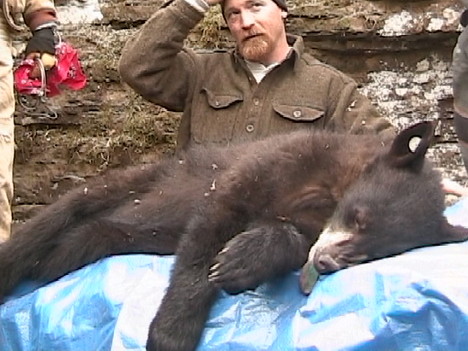
Arkansas Bear Noodling
After working with the Arkansas Game and Fish Commission throughout 2005 doing research on black bear hunting in Arkansas they gave me a call an invited me to go Arkansas Bear Denning what I like to call Bear Noodling.
Now the Arkansas Bear Biologist I believe is some of the best in the country when it comes to bear management and what it takes. Also with all that in mind they have to be just a little crazy for what they go thru to get the bears out of the den.
In this case they had capture the female in the early fall and collared her. Then in February they follow the transmitter to the den and then crawl inside to tranquilize the Mother bear and cubs.
Now remember bears in Arkansas are not exactly asleep and the ole sow is just to happy with a human in the den with her. But it is necessary so that the cubs don’t run out of the den and get separated from her this time of year.
After working with the Arkansas Game and Fish Commission throughout 2005 doing research on black bear hunting in Arkansas they gave me a call an invited me to go Arkansas Bear Denning what I like to call Bear Noodling.
Now the Arkansas Bear Biologist I believe is some of the best in the country when it comes to bear management and what it takes. Also with all that in mind they have to be just a little crazy for what they go thru to get the bears out of the den.
In this case they had capture the female in the early fall and collared her. Then in February they follow the transmitter to the den and then crawl inside to tranquilize the Mother bear and cubs.
Now remember bears in Arkansas are not exactly asleep and the ole sow is just to happy with a human in the den with her. But it is necessary so that the cubs don’t run out of the den and get separated from her this time of year.
CRACK IN ROCK or DEN
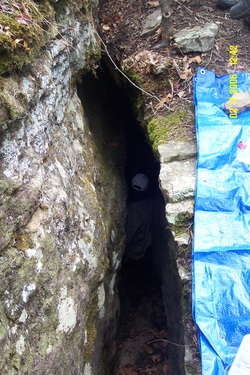
What looks like a crack in rock formed by an Oak tree root is actually a DEN, What you are seeing is one biologist that is over 6 foot tall below me then another, biologist below him then yes one more biologist below him. This goes way into the rock.
The female was too big to pull out of den on this trip but the Male Blonde Cub was 110 lbs and the Black Female Cub was a 105 lbs. When grabbing the cub you had to be sure that your hand stayed away from the mouth because they still had bite reflex. Also they may look like they are soft and furry but it was like hugging a tree, no give what so ever, solid muscle.
They tell me typical cubs are not this big but they had a big acorn crop this year so the cubs they are tagging are very healthy.
Very little thing in my life as a hunter has ever made such an impression on me, for me this was a once in a lifetime chance and gave me such appreciation as a hunter for the bear and bear management and how outstanding of a job Arkansas Bear Biologist do for the bear.
The female was too big to pull out of den on this trip but the Male Blonde Cub was 110 lbs and the Black Female Cub was a 105 lbs. When grabbing the cub you had to be sure that your hand stayed away from the mouth because they still had bite reflex. Also they may look like they are soft and furry but it was like hugging a tree, no give what so ever, solid muscle.
They tell me typical cubs are not this big but they had a big acorn crop this year so the cubs they are tagging are very healthy.
Very little thing in my life as a hunter has ever made such an impression on me, for me this was a once in a lifetime chance and gave me such appreciation as a hunter for the bear and bear management and how outstanding of a job Arkansas Bear Biologist do for the bear.
Getting ready and Finding the Sow and Cubs inside the Den.
Get in, Get Cubs Out, Get Tagged, and Get them back in.
BEAR HUNTING SUMMARY – 2005 ARKANSAS
Before I went bear denning with the Arkansas Game and Fish I went bear hunting and had a great time, got close but never got to see a bear while hunting on public land.
ARKANSAS GAME AND FISH REGULATIONS in 2005 had Zones and in Zone 1 hunter could only take 200 bears. Zone One is in the Northwest part of Arkansas, Archery Season which is what I decide how I wanted to hunt my first black bear was – October 1st, 2005 thru November 30th.
They did have other season Muzzleloader, Modern Gun and Youth Season. Either way you had to call 800 number which was in their Regulation Booklet the evening before to check the quota to see if zone still open.
After killing bear and before moving it you had to fill out game tag on Page 33 of Arkansas Hunting Guidebook and call within 24 hours to 800 number in Guidebook
Also you had to extract premolar tooth for the Arkansas Game and Fish so they could keep their data and research up.
The biggest thing to overcome while hunting on public ground but I understand why. No baiting allowed on public land, since it is public land other activities are going on and baiting could cause unattended issue. Same went for using scents. Really baiting is the only way you are going to have a chance at a black bear in this part of the country.
Calling and Electronic Calling allowed are allowed but for me it did not produce any bears, but I would say that it would work just fine if I did see a bear off in the distance. Matter fact I believe it would be very intense style of hunting since, you are basically calling the bear to come eat.
HARVEST DATA
2004 – Bear harvest 340 – 183 males & 157 females – Zone 1 – 203 checked in and hunt was closed Nov 13th. 166 Bears taken by bow, 82 muzzleloader, 92 modern gun. Private land 124 bears taken using bait.
Johnson, Pope, Newton, and Searcy counties are some of the top counties in Arkansas.
When trapping in the early fall they had individual bait stations which are established at .5 mile intervals on established routes within bear country. Johnson County (1992)
Location within in Arkansas was listed as No. 1 Complaint “Livestock Feed – 1998”
The No.1 months for these complaints are in August and September just before the Acorn Drop.
MAPS & POINT OF INTEREST
White Rock – 280,000 Acre within the Ozark National Forest was a large track of land.
Cass, Arkansas – Franklin County, Johnson County, Newton County, Pope County again was some of the top harvest.
Within the Boston Mountain Ranger District - Mulberry River noted by individuals canoeing note bear sightings.
Piney Creeks Wildlife Management Area 176,00 Acres was another public hunting area.
Ozark National Forest
Richland Creek another source of water.
White Rock Mountain Recreation Area
Gas Well, Pipe Line on Alexander Mtn was good area for clearning.
But my choice was Morgan Mountain – Ponds – 3 miles from Johnson County
4 – Ponds – 2 dry, 1 wet, 1 not found. Spy Rock Hollow and Branch off of Herrods Creek
94669D – Turn Left and Logging and New Road. Fly Gap comes out to Morgan Mountain Cemetery
Outside of my hunting area of interest
Dry Creek Wilderness, Ouachita National Forest – One of the largest populations of black bears in Arkansas reside here. (Density)
White Rock and Dry Creek Study Areas.
White Rock and Cass area boundaries of study area.
White Rock was one of the original bear reintroduction sites.
Traps located on ridgetops 160 yards from roads.
Not hunting this area (White river currently trapping bears and re-population of other areas.)(Big Island owned by Anderson-Tully Company and Montgomery Island Hunting Club)
One release site was the Muddy Creek WMA in Ouachita National Forest
Currently bear densities in some areas are as high as one bear per 2 square miles and overall may be as high as one bear per four square miles.
At one time Arkansas had the largest populations in North America and the White river still held 40 to 50 when population was at its lowest.
Two release sites at the time of reintroduction were Piney Creek Wildlife Management Area and White Rock Wildlife Management Area.(Black Mountain)
White Rock is known as success because of high density of bears.
3.5 year old male Black Bear was marked near Cass.
Dens location majority are rock bluff dens.
West of 23 – CASS – Soda Hollow & Browder Hollow
East of 23 – Redding Campground – Herrod Creek, Indian Creek, Mountain Creek
White Oaks will be EAST side of Morgan Mountain and are the preferred food source. Broken Branches on white oak tree are good way to track bears – Follow fresh to old branches.
Newton County – Stack Rock was another notable site.
BIOLOGY AND HABITS
Bears have poor eyesight and have an extraordinary sense of smell.
Adult Males – 130 to 300 pounds
Adult Females – 90 to 150 pounds
Biggest bear documented is 600 pounds
Male and Females cannot distinguish between.
Males are larger.
Older Bears short legs, looks closer to the ground and grove in middle of forehead and short eared.
Younger bear’s have longer legs, longer ears
Body growth among highest in North America
Infanticide by adult male black bears will occur.
Because of the reintroduction of bears was close to the same percentage 23 percent of the Bear now in Arkansas are brown or cinnamon in color in the Ozark Mountain Region.
Bear will stand on its hind legs with its nose in the air to scent the wind.
FOOD FOR BEARS
Will dig for roots and rip open logs and stumps for food.
Black bears are rarely vocal, but do have several calls.
Growls and huffs – anger
whining and sniffs
woof – woof- woof – female warning cubs
The cry of a bear cub is similar to that of a human baby.
Bears will eat almost anything.
Soft mass and hard mast in the fall. Acorns and Berries
Weight gain of 1 to 2 pounds per day.
Low human activity – active dawn till dark.
Acorns 34% of diet.
Pokeweed in October
Oak Mast most important
20000 calories in a 24-hour period while feeding on acorns
Bear movements increase in response to acorn abundance, known as the fall shuffle. Their Activity patterns change from being primarily crepuscular (Crepuscular is a term used to describe animals that are primarily active during the twilight. Crepuscular is thus in contrast with diurnal and nocturnal. Crepuscular animals may also be active on a bright moonlit night. Many animals that are casually described as nocturnal are in fact crepuscular. Within the definition of crepuscular are the terms matutinal and vespertine, denoting animals active in the morning (dawn) and evening (dusk) respectively), to nearly continuous activity to forage on acorns.
Localized mast resulting in increased effectiveness of archery hunters.
Black bears consume whole and prefer white oaks.
Look for White Oak that are 50 years and older but less than 120 years they tend to produce the most and best acorns.
Pokeweed requires clearings.
Paw prints in the mud or sand, Bear Scat, Turned over rocks. Claw marks on tree trunks are communication between bears – 3 to 6 feet off of ground are all the different ways to track a black bear in area it uses.
BEARS DRINK FREQUENTLY AND ARE USUALLY FOUND IN THE VICINITY OF WATER. Water source in dry areas are. Are some of the best location to find bears.
Home ranges of adults are 5 to 20 square miles. August, September and October feed 18-20 hours a day.
Calling usually brings in larger bears.
Bear can hear a call up to mile depending on terrain.
White Oak Benches are also great places to find bears.
SURPRISE ENCOUNTERS
Few things I needed to know before going out was stand your ground. Shouting and Bear Spray
HUNTING
Where to aim – Broadside by following the line up the center of the nearside leg to a point 1/3 to ½ up on the chest. Wait for near side leg to move forward. Hunting without bait methods look for main food source – Hilltop ridges with white oak acorns. Clear Cuts from early spring or summer that will have pokeweed also great places.
Varmit Calling if a bear is sighted in the distance.
Harvest records for the first 6 bear hunts note Newton and Franklin Counties in 2005.
Outcropping of rock ledges and rock benches (Area on tops that lines are almost together or touching).
Hunter bag all four of his bears between 12:00 p.m. and 4:00 p.m.
If you do have a down bear always approach down bear from uphill. Also a dead bears eyes should be open.
Predator Call – Never quit calling until ready to shoot.
Note in Arkansas White Tags are Female and sometimes have radio collars they are legal but a lot of research goes into them
Yellow Tags are Male and sometimes are two yellow tags nuisance bears.
REFERENCES TO LOOK FOR
Wanting to learn more about bears these are some great resources.
Joseph D Clark – Ecology of Two Populations in the Interior Highlands of Arkansas
(Now at the University of Tennessee) – White Rock and Dry Creek Study Areas.
Fall Food of Black Bears in Arkansas
Joseph D Clark
Oak-Black Bear Relationships in Southeastern uplands
Joseph D Clark
E-MAILS & INTERVIEWS
Ricky J Eastridge – Biologist AGFC – Phone and E-mails
Joseph D Clark – E-mails
Rachel Spaulding – AGFC - E-mails
Mike Capps – Hunter Specialties – E-mails
Wayne Carlton – Carlton Calls – Phone
Jerry Peterson – Wood Wise Calls – E-mails
Bill Paxton – Integrated Resource Analyst – USDA – F.S. – In Person
Ralph Odegard – Wildlife Biologist – USDA F.S. - Phone
Rhea Rylee – District Biologist – Boston Mountain Ranger District – Phone
Myron Means – AGFC – Field Biologist - Phone
Mike Mulford – Forest Service – In Person
Hunter & Loggers in Person.
MISC.
Be prepared for a difficult drag, since hunting by myself will need winch and sled. Bear meat is similar to pork I am told.
Taxidermy Estimates run Full Mount – $1,800, Half – $750, Rug – $750 or Shoulder – $350
ARKANSAS GAME AND FISH REGULATIONS in 2005 had Zones and in Zone 1 hunter could only take 200 bears. Zone One is in the Northwest part of Arkansas, Archery Season which is what I decide how I wanted to hunt my first black bear was – October 1st, 2005 thru November 30th.
They did have other season Muzzleloader, Modern Gun and Youth Season. Either way you had to call 800 number which was in their Regulation Booklet the evening before to check the quota to see if zone still open.
After killing bear and before moving it you had to fill out game tag on Page 33 of Arkansas Hunting Guidebook and call within 24 hours to 800 number in Guidebook
Also you had to extract premolar tooth for the Arkansas Game and Fish so they could keep their data and research up.
The biggest thing to overcome while hunting on public ground but I understand why. No baiting allowed on public land, since it is public land other activities are going on and baiting could cause unattended issue. Same went for using scents. Really baiting is the only way you are going to have a chance at a black bear in this part of the country.
Calling and Electronic Calling allowed are allowed but for me it did not produce any bears, but I would say that it would work just fine if I did see a bear off in the distance. Matter fact I believe it would be very intense style of hunting since, you are basically calling the bear to come eat.
HARVEST DATA
2004 – Bear harvest 340 – 183 males & 157 females – Zone 1 – 203 checked in and hunt was closed Nov 13th. 166 Bears taken by bow, 82 muzzleloader, 92 modern gun. Private land 124 bears taken using bait.
Johnson, Pope, Newton, and Searcy counties are some of the top counties in Arkansas.
When trapping in the early fall they had individual bait stations which are established at .5 mile intervals on established routes within bear country. Johnson County (1992)
Location within in Arkansas was listed as No. 1 Complaint “Livestock Feed – 1998”
The No.1 months for these complaints are in August and September just before the Acorn Drop.
MAPS & POINT OF INTEREST
White Rock – 280,000 Acre within the Ozark National Forest was a large track of land.
Cass, Arkansas – Franklin County, Johnson County, Newton County, Pope County again was some of the top harvest.
Within the Boston Mountain Ranger District - Mulberry River noted by individuals canoeing note bear sightings.
Piney Creeks Wildlife Management Area 176,00 Acres was another public hunting area.
Ozark National Forest
Richland Creek another source of water.
White Rock Mountain Recreation Area
Gas Well, Pipe Line on Alexander Mtn was good area for clearning.
But my choice was Morgan Mountain – Ponds – 3 miles from Johnson County
4 – Ponds – 2 dry, 1 wet, 1 not found. Spy Rock Hollow and Branch off of Herrods Creek
94669D – Turn Left and Logging and New Road. Fly Gap comes out to Morgan Mountain Cemetery
Outside of my hunting area of interest
Dry Creek Wilderness, Ouachita National Forest – One of the largest populations of black bears in Arkansas reside here. (Density)
White Rock and Dry Creek Study Areas.
White Rock and Cass area boundaries of study area.
White Rock was one of the original bear reintroduction sites.
Traps located on ridgetops 160 yards from roads.
Not hunting this area (White river currently trapping bears and re-population of other areas.)(Big Island owned by Anderson-Tully Company and Montgomery Island Hunting Club)
One release site was the Muddy Creek WMA in Ouachita National Forest
Currently bear densities in some areas are as high as one bear per 2 square miles and overall may be as high as one bear per four square miles.
At one time Arkansas had the largest populations in North America and the White river still held 40 to 50 when population was at its lowest.
Two release sites at the time of reintroduction were Piney Creek Wildlife Management Area and White Rock Wildlife Management Area.(Black Mountain)
White Rock is known as success because of high density of bears.
3.5 year old male Black Bear was marked near Cass.
Dens location majority are rock bluff dens.
West of 23 – CASS – Soda Hollow & Browder Hollow
East of 23 – Redding Campground – Herrod Creek, Indian Creek, Mountain Creek
White Oaks will be EAST side of Morgan Mountain and are the preferred food source. Broken Branches on white oak tree are good way to track bears – Follow fresh to old branches.
Newton County – Stack Rock was another notable site.
BIOLOGY AND HABITS
Bears have poor eyesight and have an extraordinary sense of smell.
Adult Males – 130 to 300 pounds
Adult Females – 90 to 150 pounds
Biggest bear documented is 600 pounds
Male and Females cannot distinguish between.
Males are larger.
Older Bears short legs, looks closer to the ground and grove in middle of forehead and short eared.
Younger bear’s have longer legs, longer ears
Body growth among highest in North America
Infanticide by adult male black bears will occur.
Because of the reintroduction of bears was close to the same percentage 23 percent of the Bear now in Arkansas are brown or cinnamon in color in the Ozark Mountain Region.
Bear will stand on its hind legs with its nose in the air to scent the wind.
FOOD FOR BEARS
Will dig for roots and rip open logs and stumps for food.
Black bears are rarely vocal, but do have several calls.
Growls and huffs – anger
whining and sniffs
woof – woof- woof – female warning cubs
The cry of a bear cub is similar to that of a human baby.
Bears will eat almost anything.
Soft mass and hard mast in the fall. Acorns and Berries
Weight gain of 1 to 2 pounds per day.
Low human activity – active dawn till dark.
Acorns 34% of diet.
Pokeweed in October
Oak Mast most important
20000 calories in a 24-hour period while feeding on acorns
Bear movements increase in response to acorn abundance, known as the fall shuffle. Their Activity patterns change from being primarily crepuscular (Crepuscular is a term used to describe animals that are primarily active during the twilight. Crepuscular is thus in contrast with diurnal and nocturnal. Crepuscular animals may also be active on a bright moonlit night. Many animals that are casually described as nocturnal are in fact crepuscular. Within the definition of crepuscular are the terms matutinal and vespertine, denoting animals active in the morning (dawn) and evening (dusk) respectively), to nearly continuous activity to forage on acorns.
Localized mast resulting in increased effectiveness of archery hunters.
Black bears consume whole and prefer white oaks.
Look for White Oak that are 50 years and older but less than 120 years they tend to produce the most and best acorns.
Pokeweed requires clearings.
Paw prints in the mud or sand, Bear Scat, Turned over rocks. Claw marks on tree trunks are communication between bears – 3 to 6 feet off of ground are all the different ways to track a black bear in area it uses.
BEARS DRINK FREQUENTLY AND ARE USUALLY FOUND IN THE VICINITY OF WATER. Water source in dry areas are. Are some of the best location to find bears.
Home ranges of adults are 5 to 20 square miles. August, September and October feed 18-20 hours a day.
Calling usually brings in larger bears.
Bear can hear a call up to mile depending on terrain.
White Oak Benches are also great places to find bears.
SURPRISE ENCOUNTERS
Few things I needed to know before going out was stand your ground. Shouting and Bear Spray
HUNTING
Where to aim – Broadside by following the line up the center of the nearside leg to a point 1/3 to ½ up on the chest. Wait for near side leg to move forward. Hunting without bait methods look for main food source – Hilltop ridges with white oak acorns. Clear Cuts from early spring or summer that will have pokeweed also great places.
Varmit Calling if a bear is sighted in the distance.
Harvest records for the first 6 bear hunts note Newton and Franklin Counties in 2005.
Outcropping of rock ledges and rock benches (Area on tops that lines are almost together or touching).
Hunter bag all four of his bears between 12:00 p.m. and 4:00 p.m.
If you do have a down bear always approach down bear from uphill. Also a dead bears eyes should be open.
Predator Call – Never quit calling until ready to shoot.
Note in Arkansas White Tags are Female and sometimes have radio collars they are legal but a lot of research goes into them
Yellow Tags are Male and sometimes are two yellow tags nuisance bears.
REFERENCES TO LOOK FOR
Wanting to learn more about bears these are some great resources.
Joseph D Clark – Ecology of Two Populations in the Interior Highlands of Arkansas
(Now at the University of Tennessee) – White Rock and Dry Creek Study Areas.
Fall Food of Black Bears in Arkansas
Joseph D Clark
Oak-Black Bear Relationships in Southeastern uplands
Joseph D Clark
E-MAILS & INTERVIEWS
Ricky J Eastridge – Biologist AGFC – Phone and E-mails
Joseph D Clark – E-mails
Rachel Spaulding – AGFC - E-mails
Mike Capps – Hunter Specialties – E-mails
Wayne Carlton – Carlton Calls – Phone
Jerry Peterson – Wood Wise Calls – E-mails
Bill Paxton – Integrated Resource Analyst – USDA – F.S. – In Person
Ralph Odegard – Wildlife Biologist – USDA F.S. - Phone
Rhea Rylee – District Biologist – Boston Mountain Ranger District – Phone
Myron Means – AGFC – Field Biologist - Phone
Mike Mulford – Forest Service – In Person
Hunter & Loggers in Person.
MISC.
Be prepared for a difficult drag, since hunting by myself will need winch and sled. Bear meat is similar to pork I am told.
Taxidermy Estimates run Full Mount – $1,800, Half – $750, Rug – $750 or Shoulder – $350
